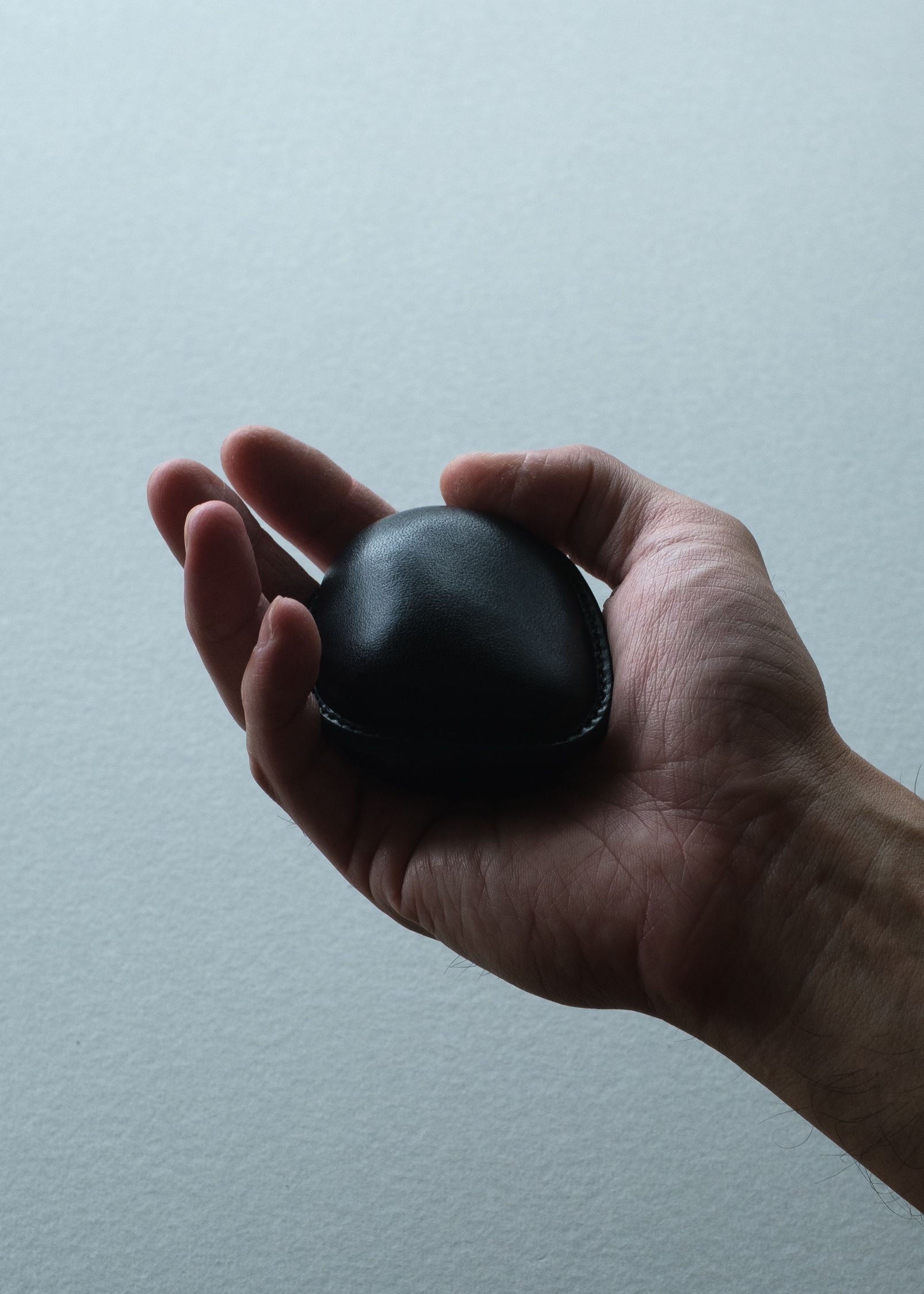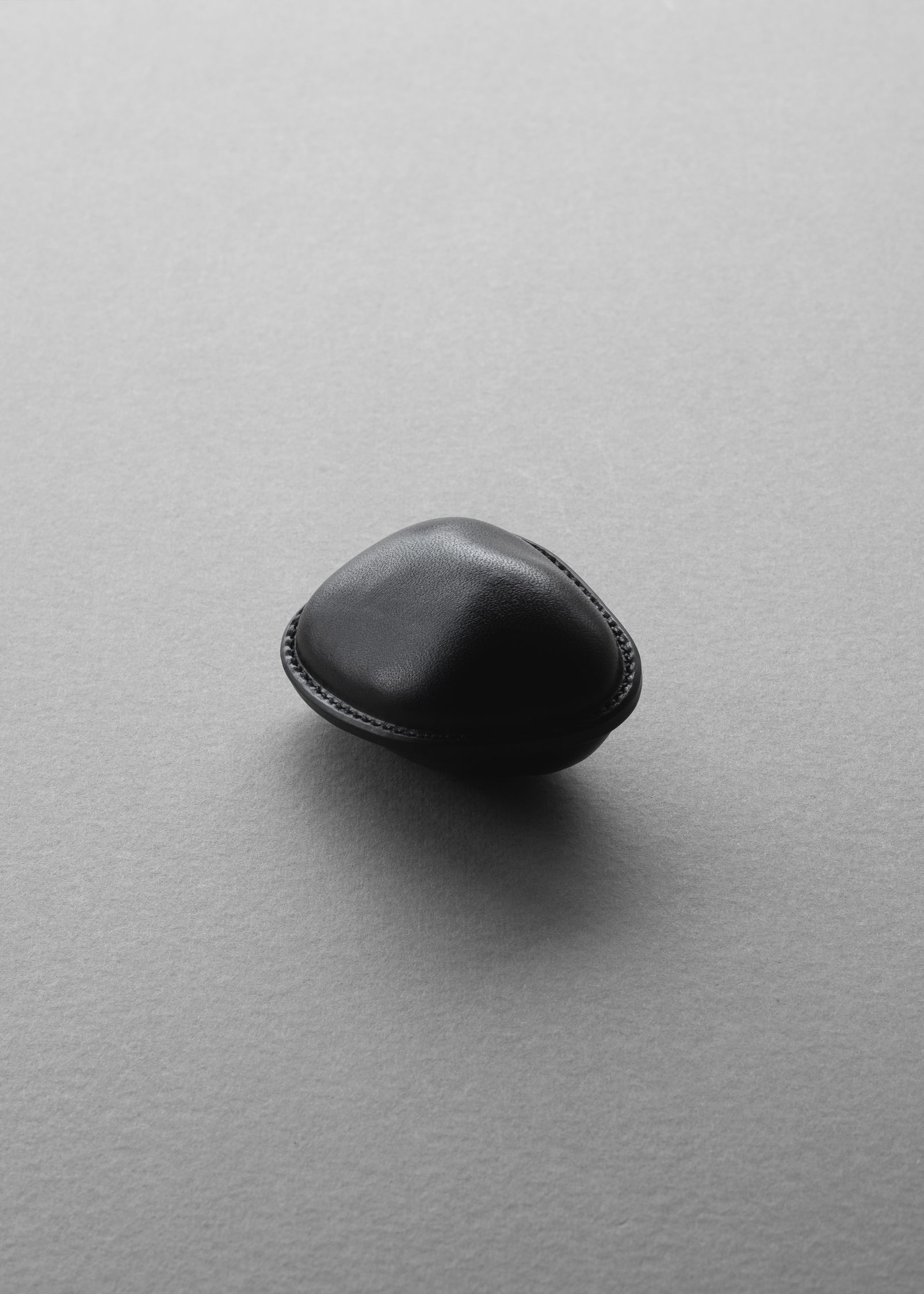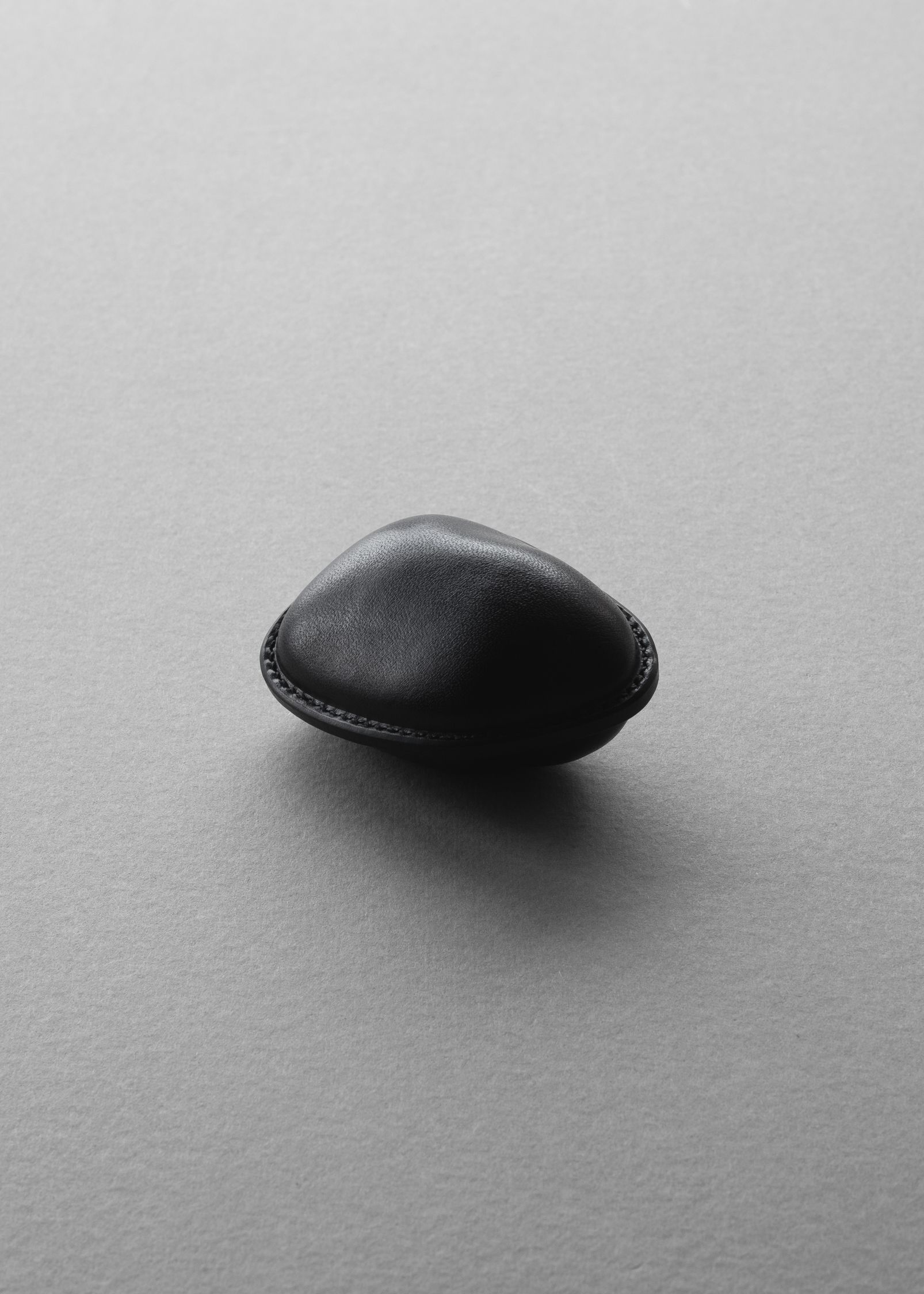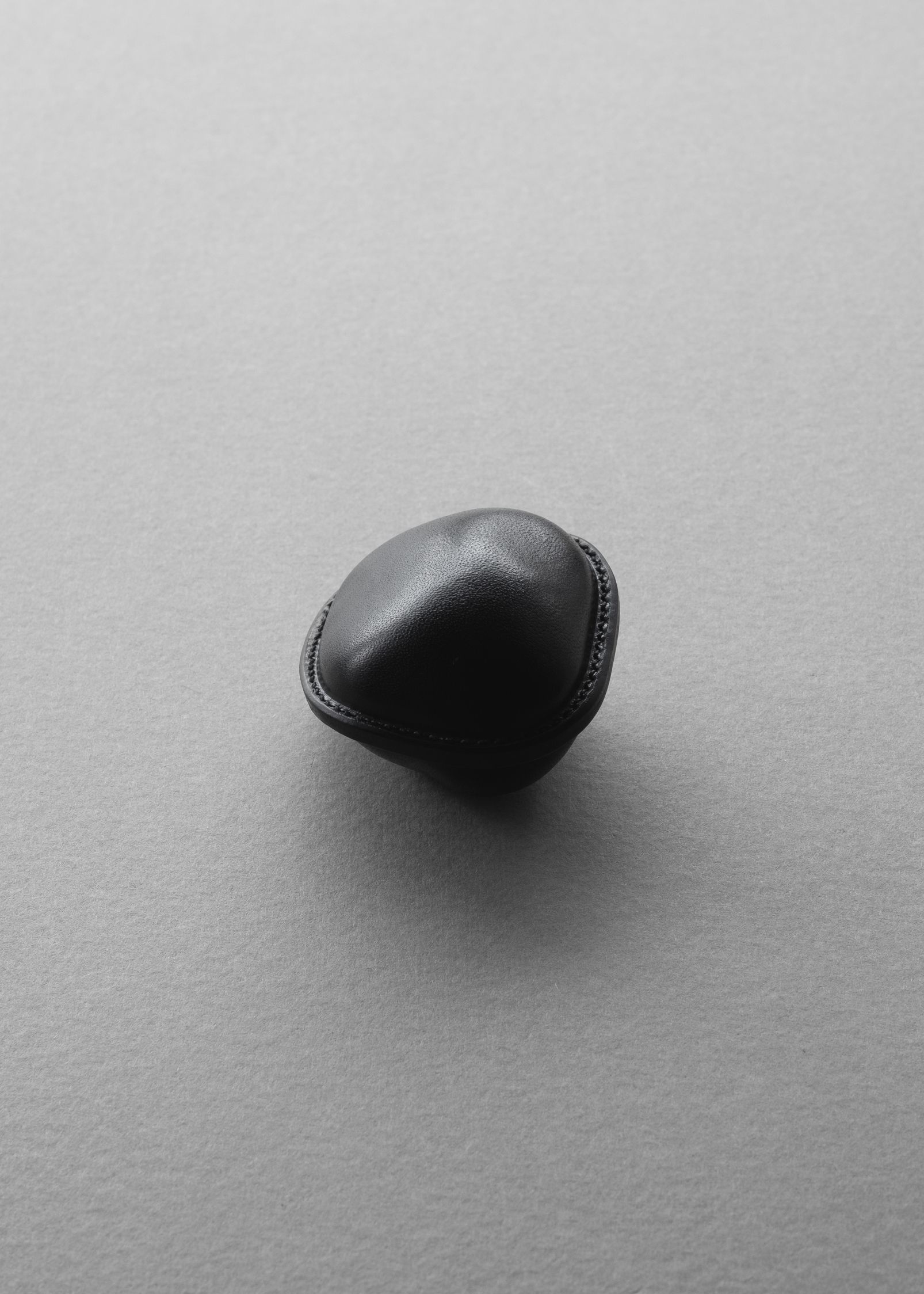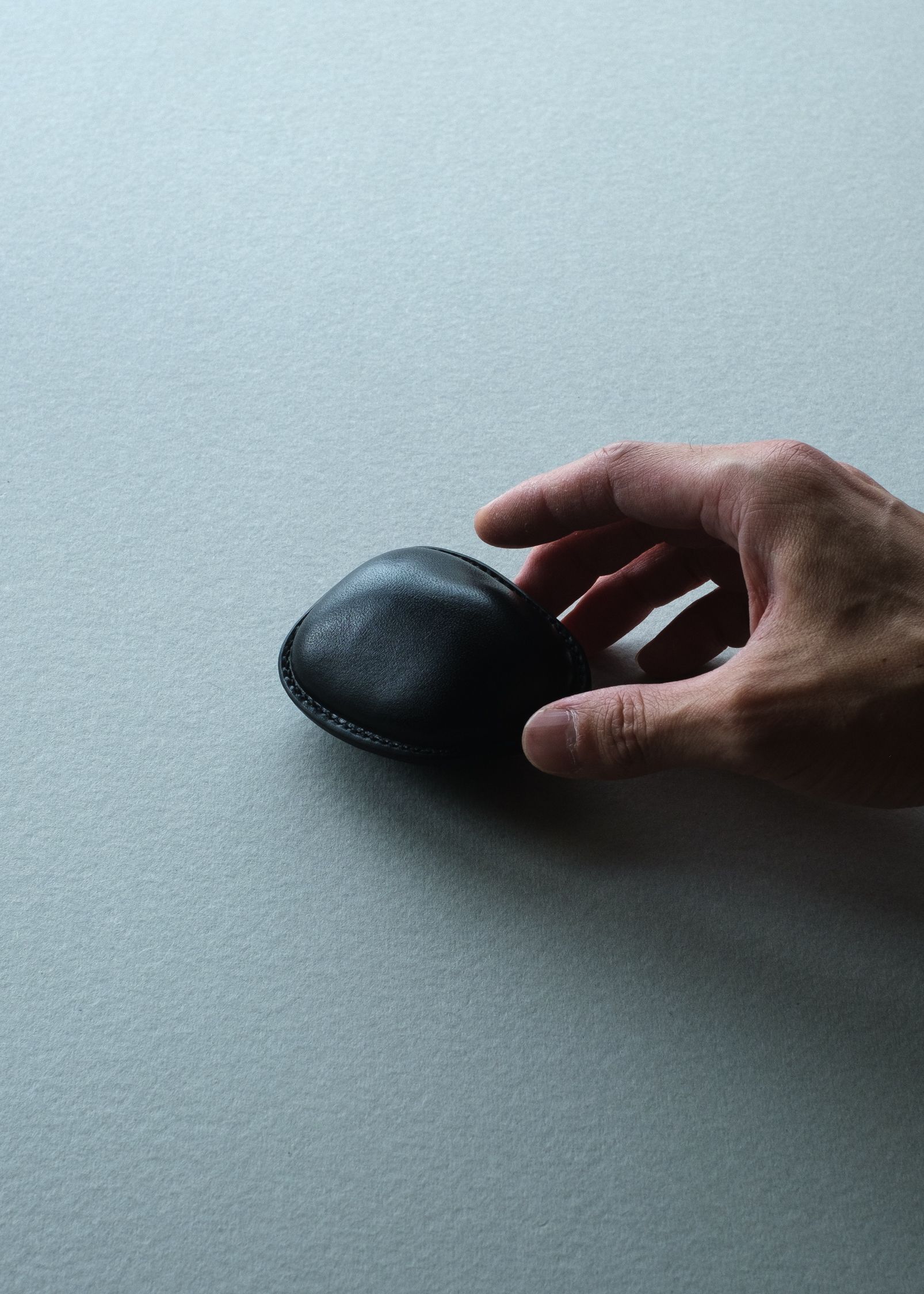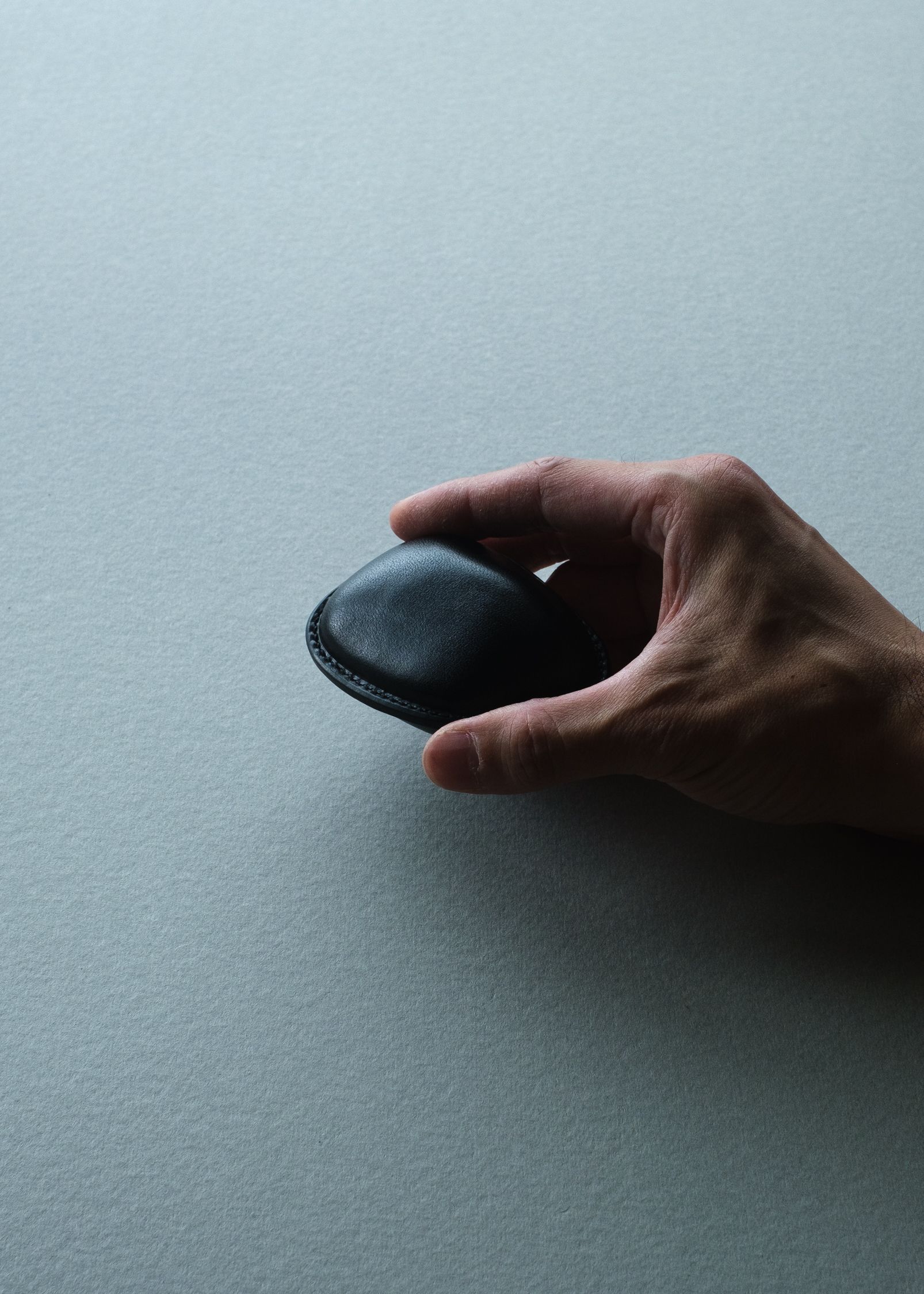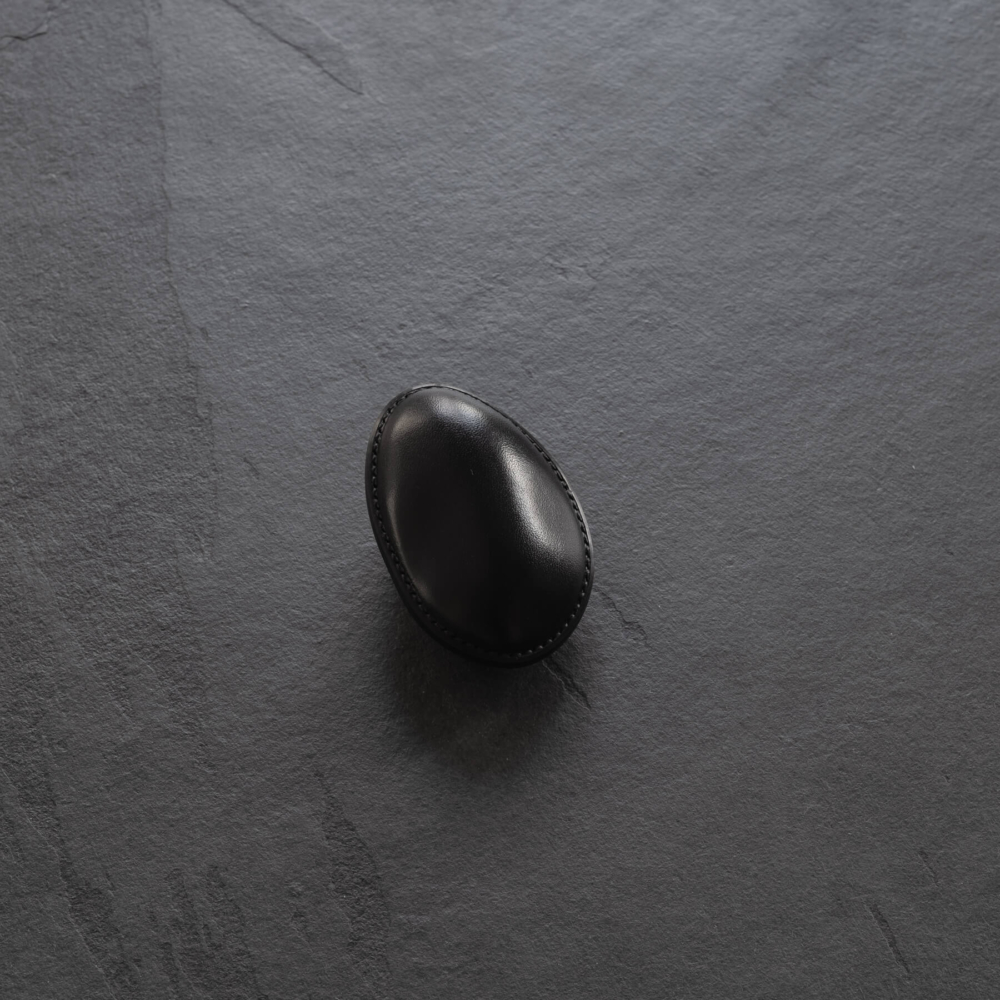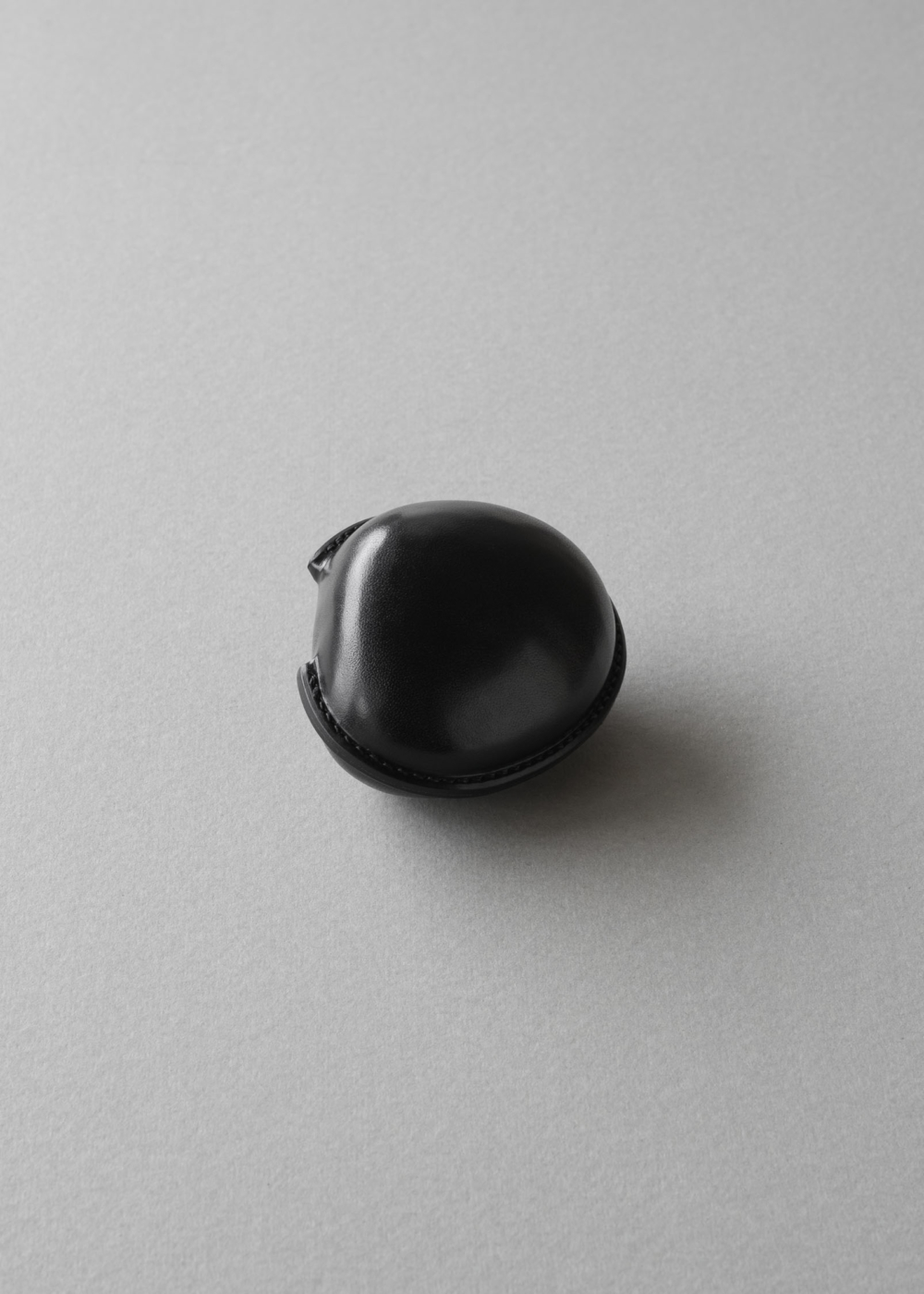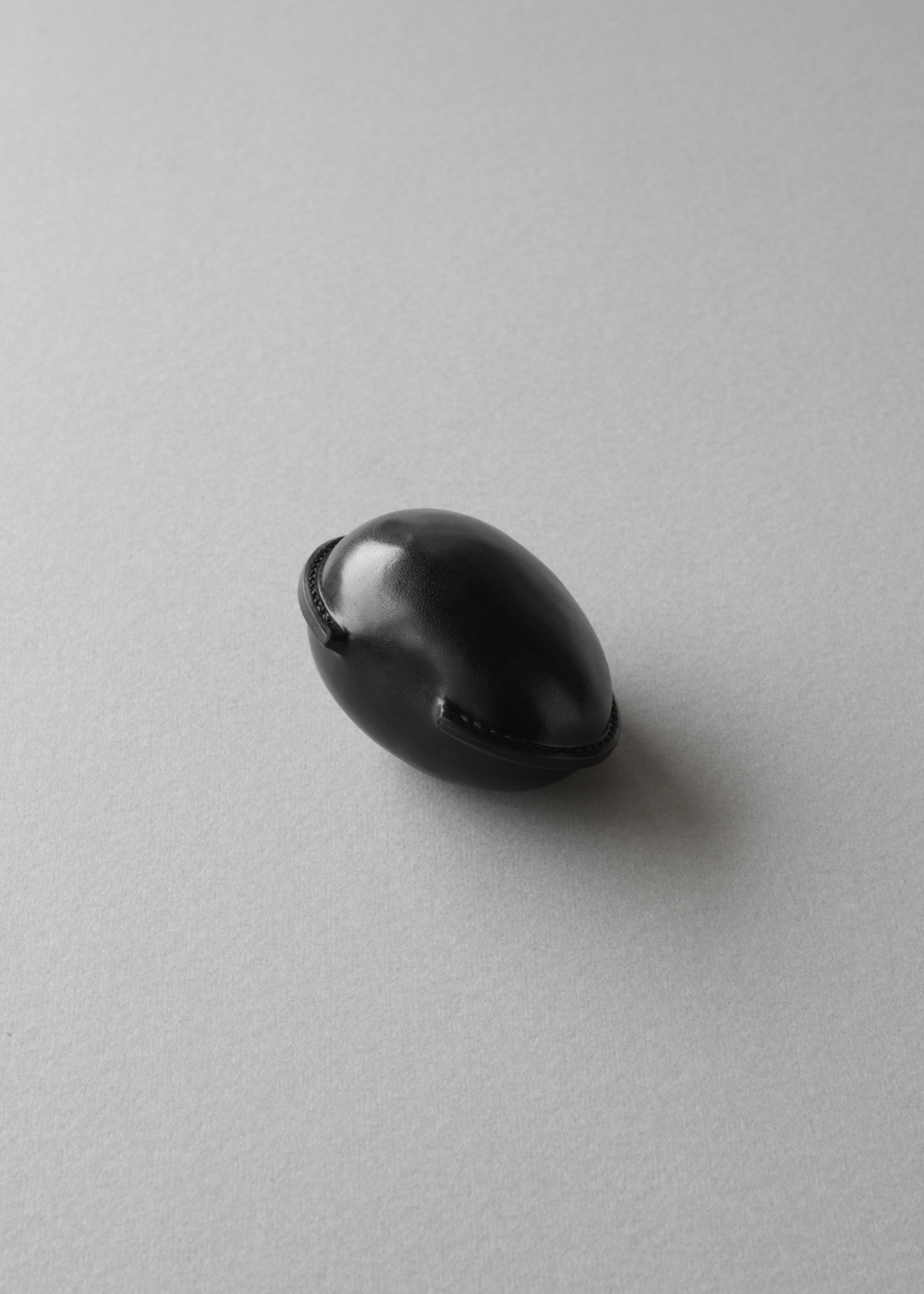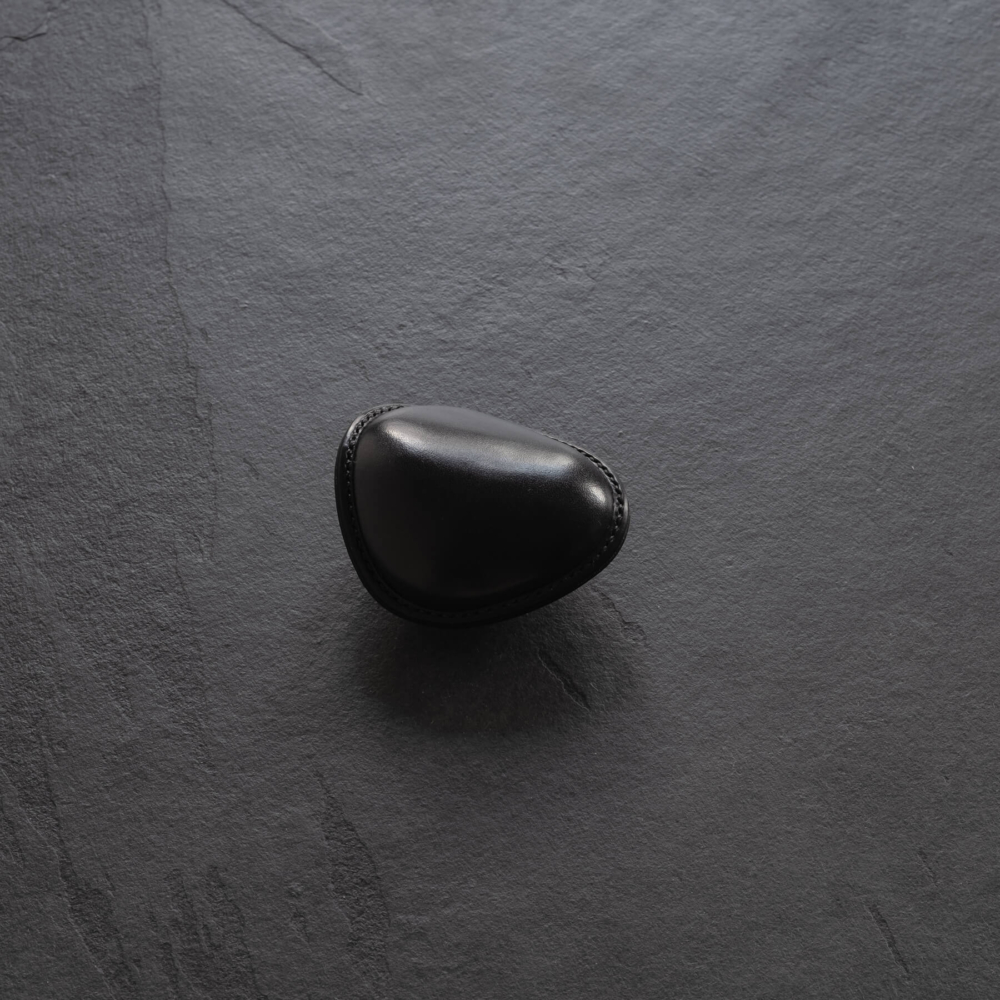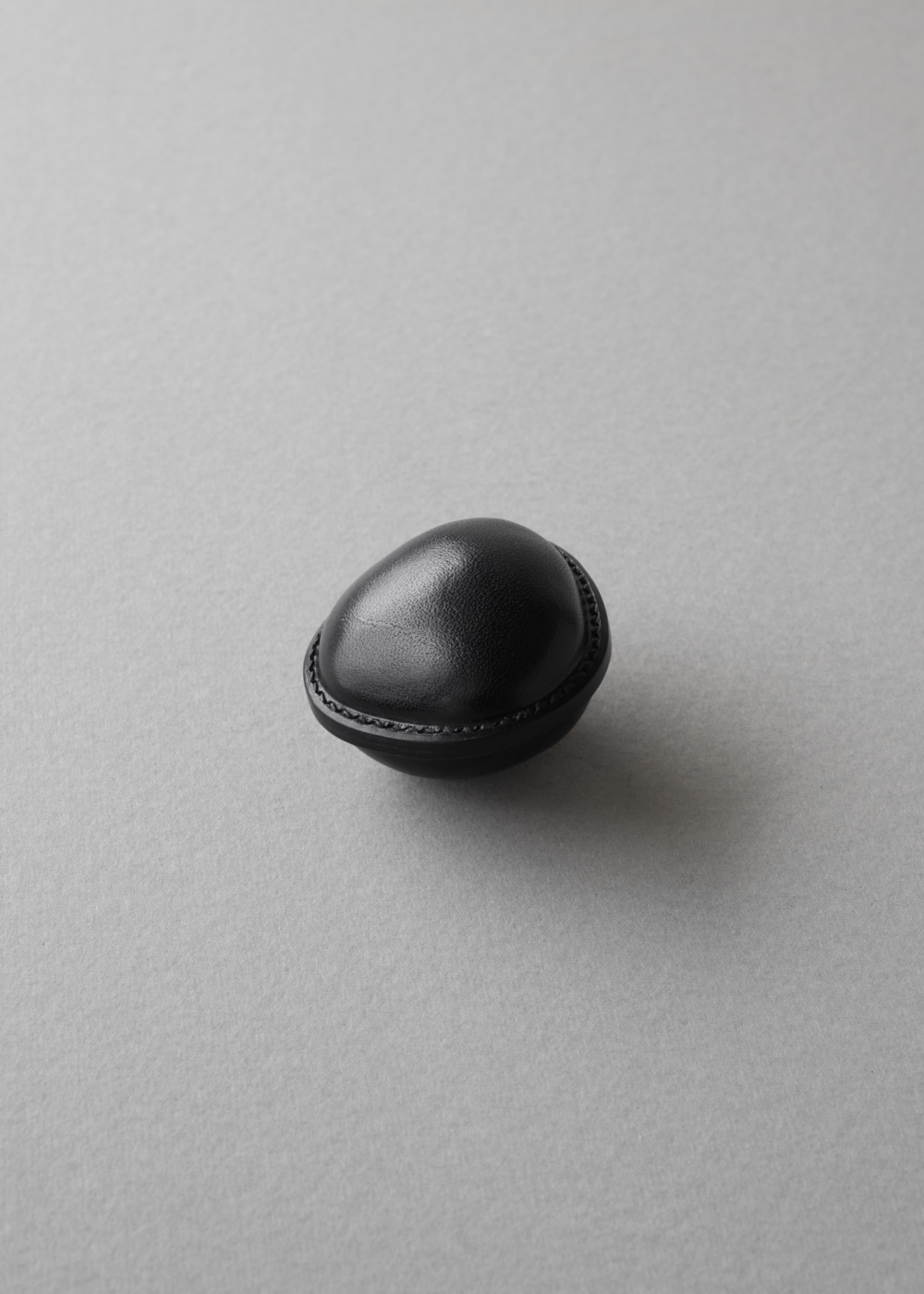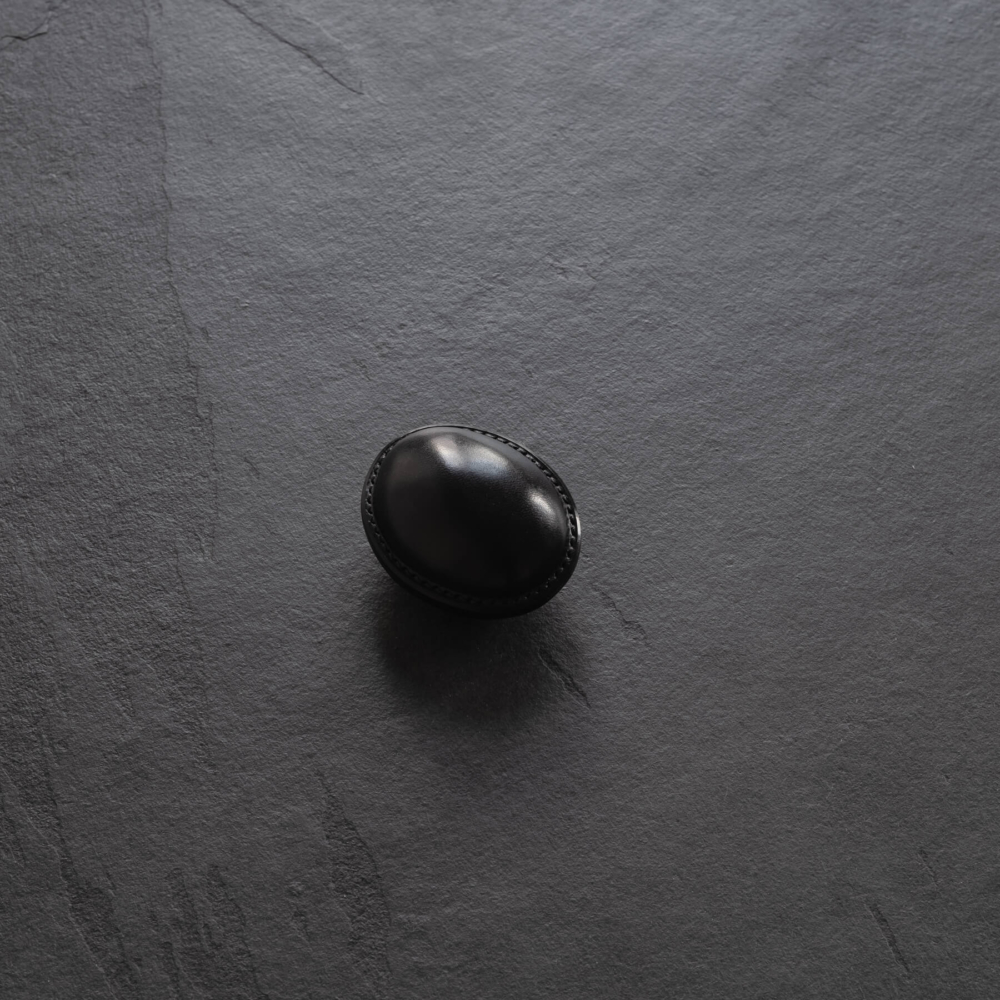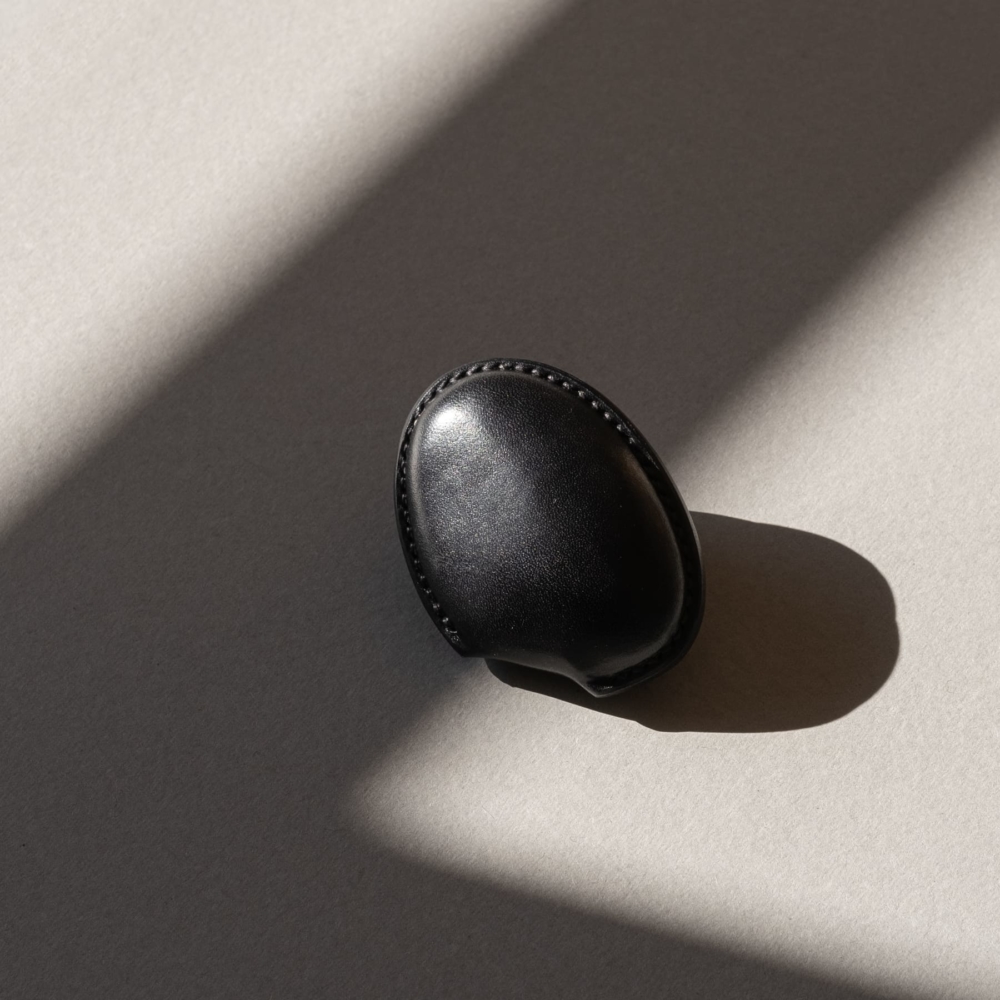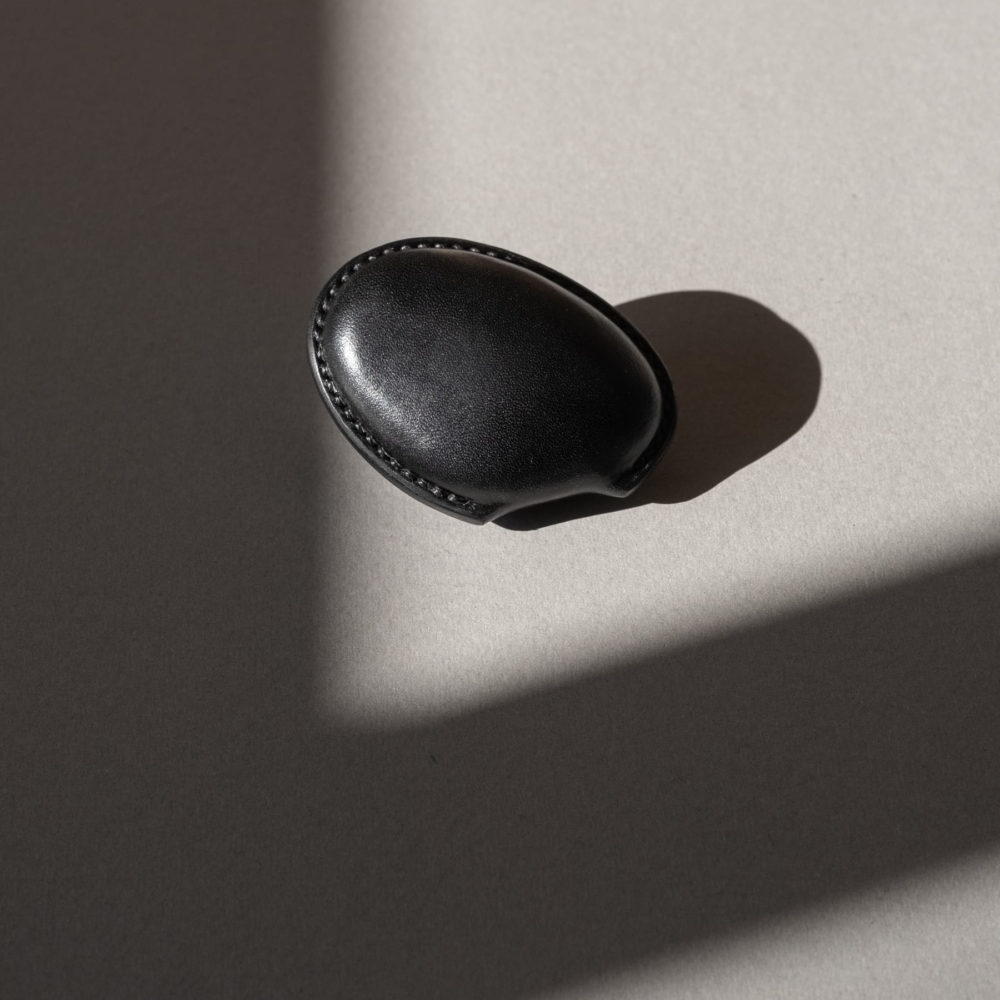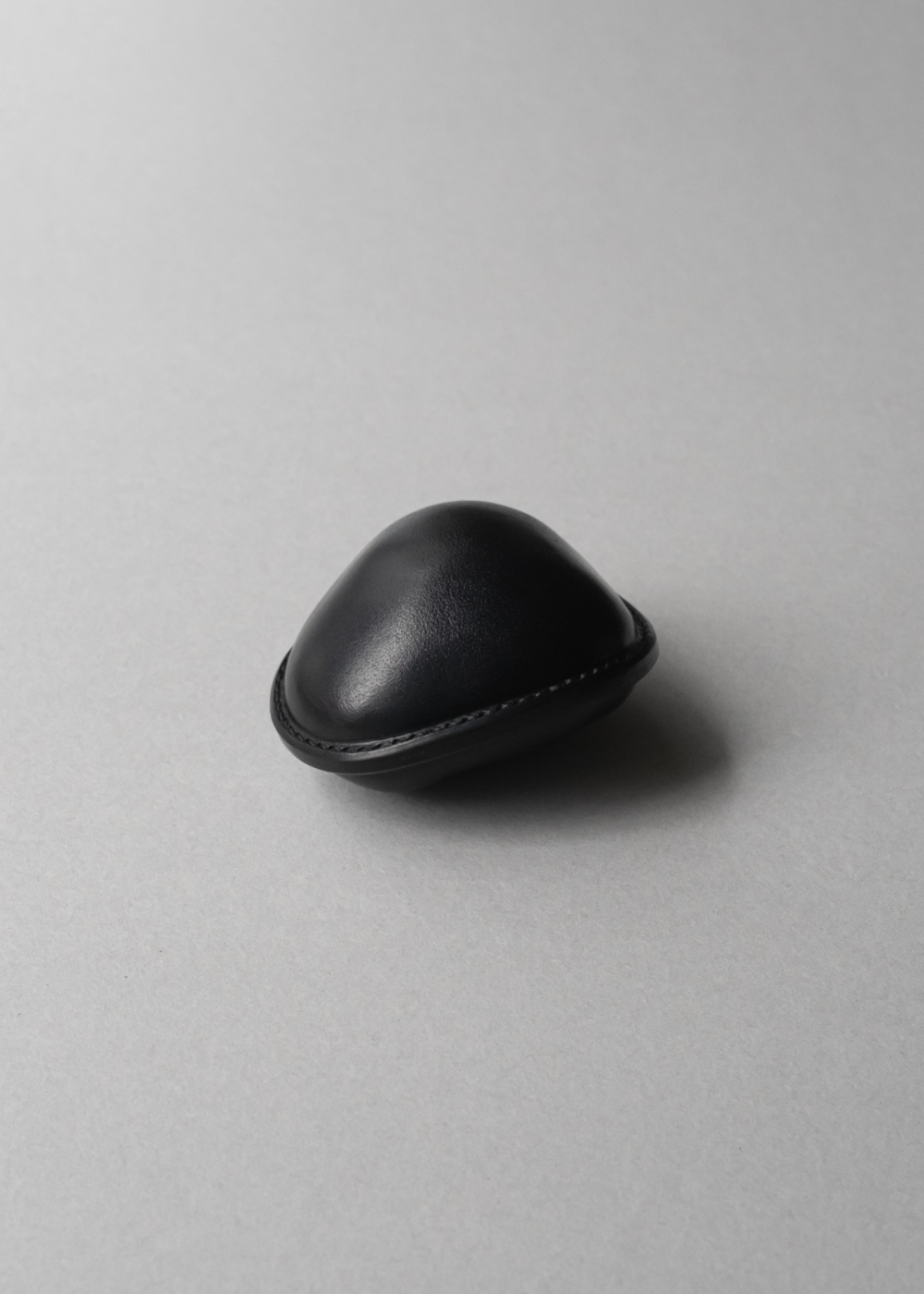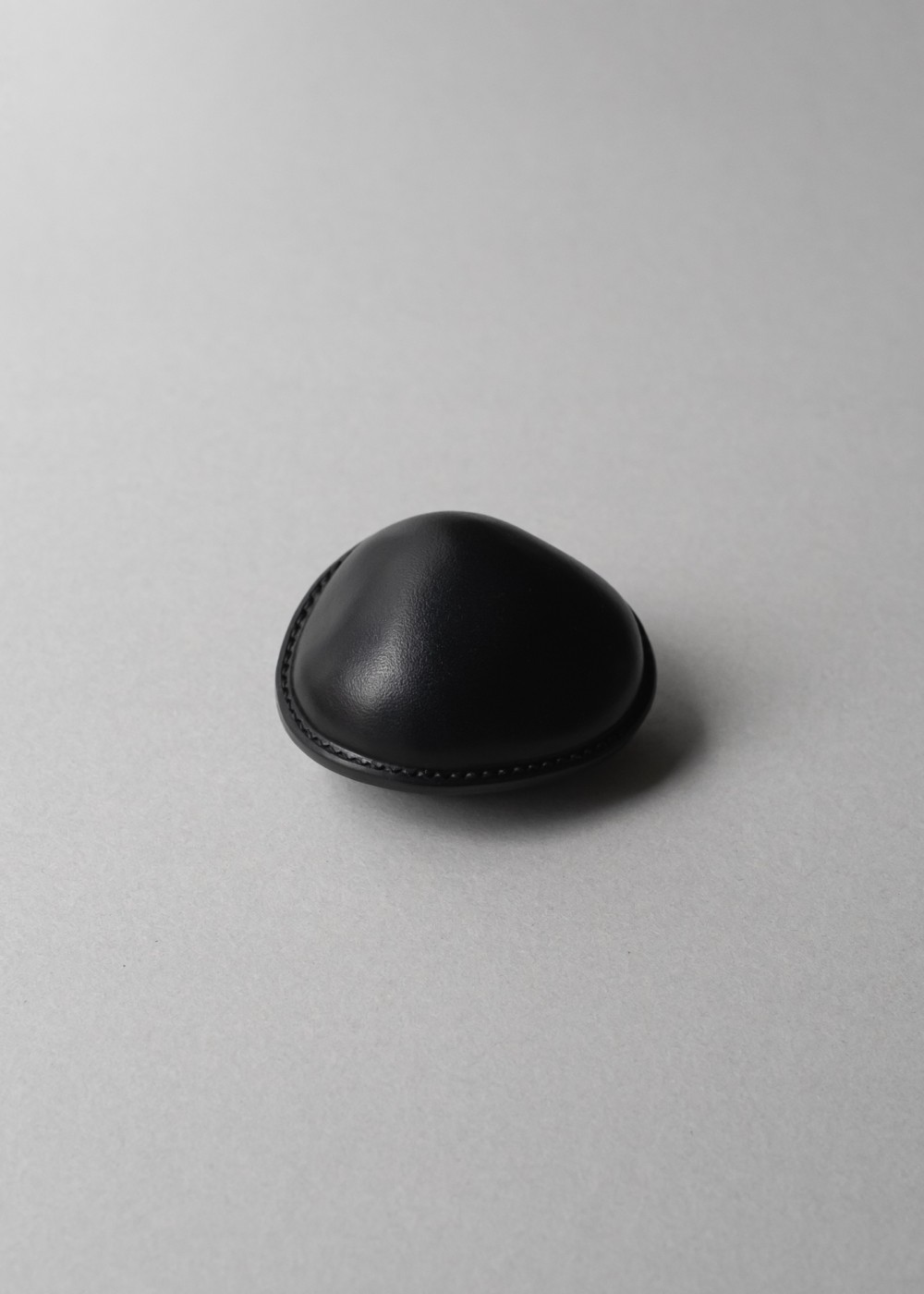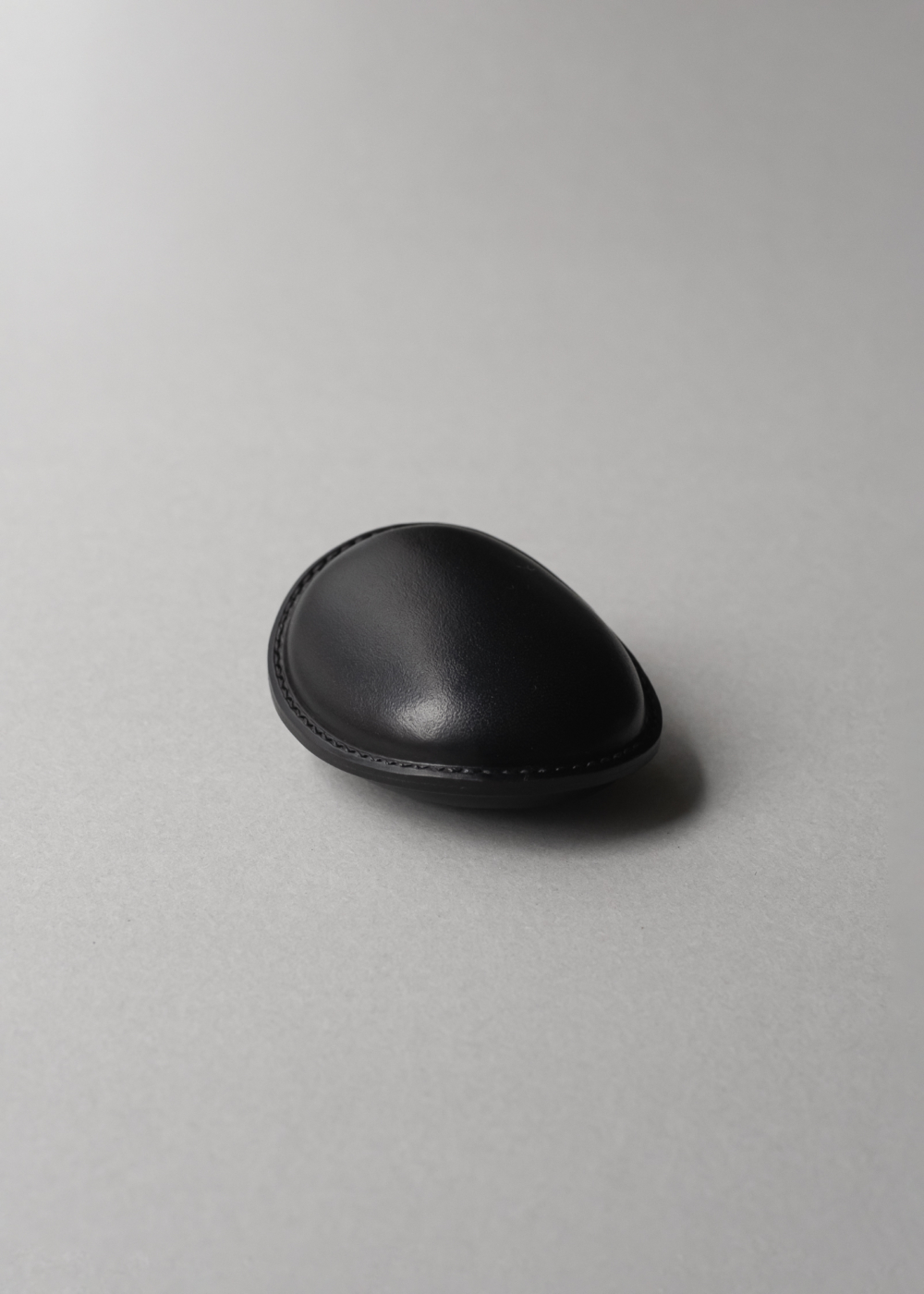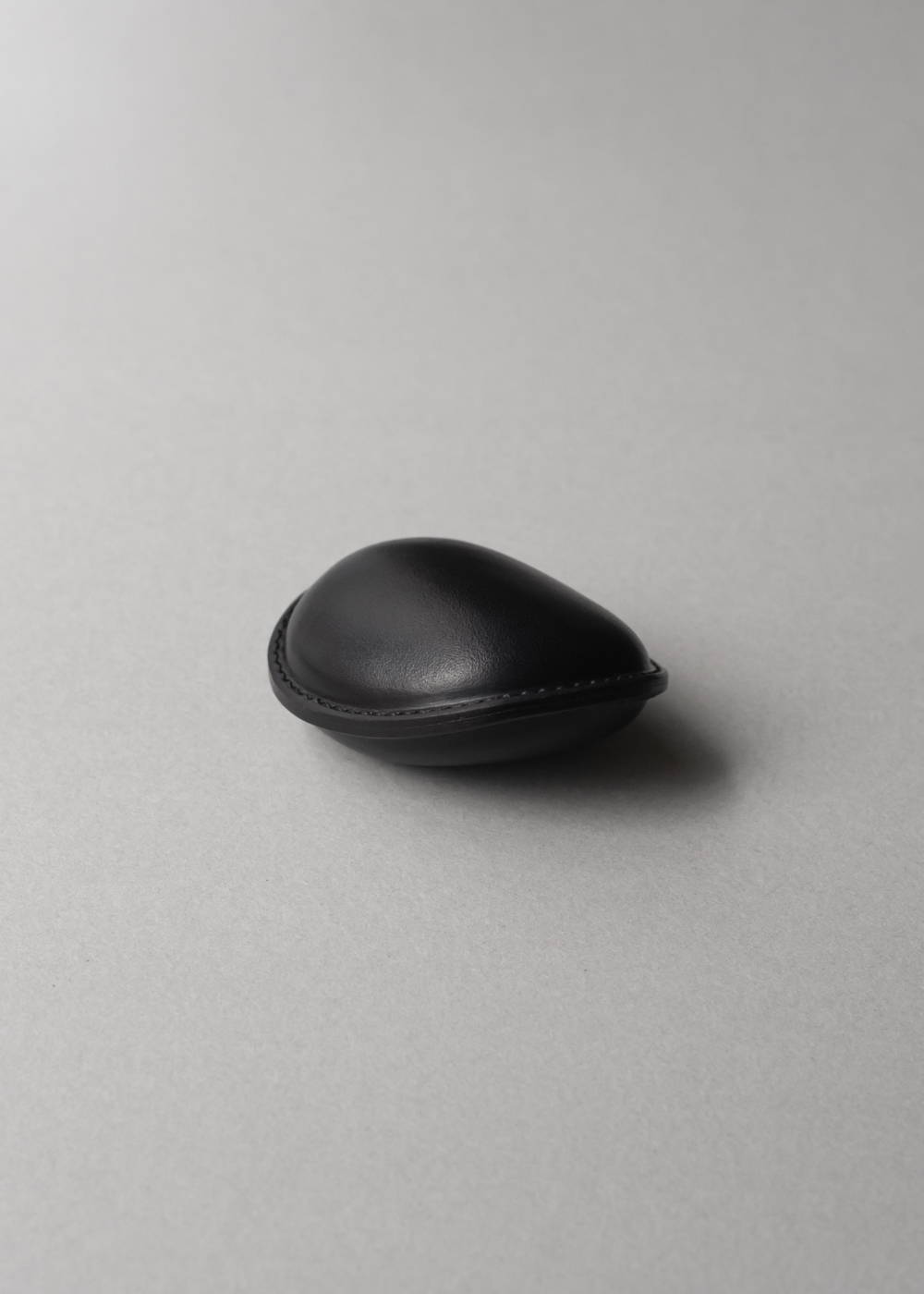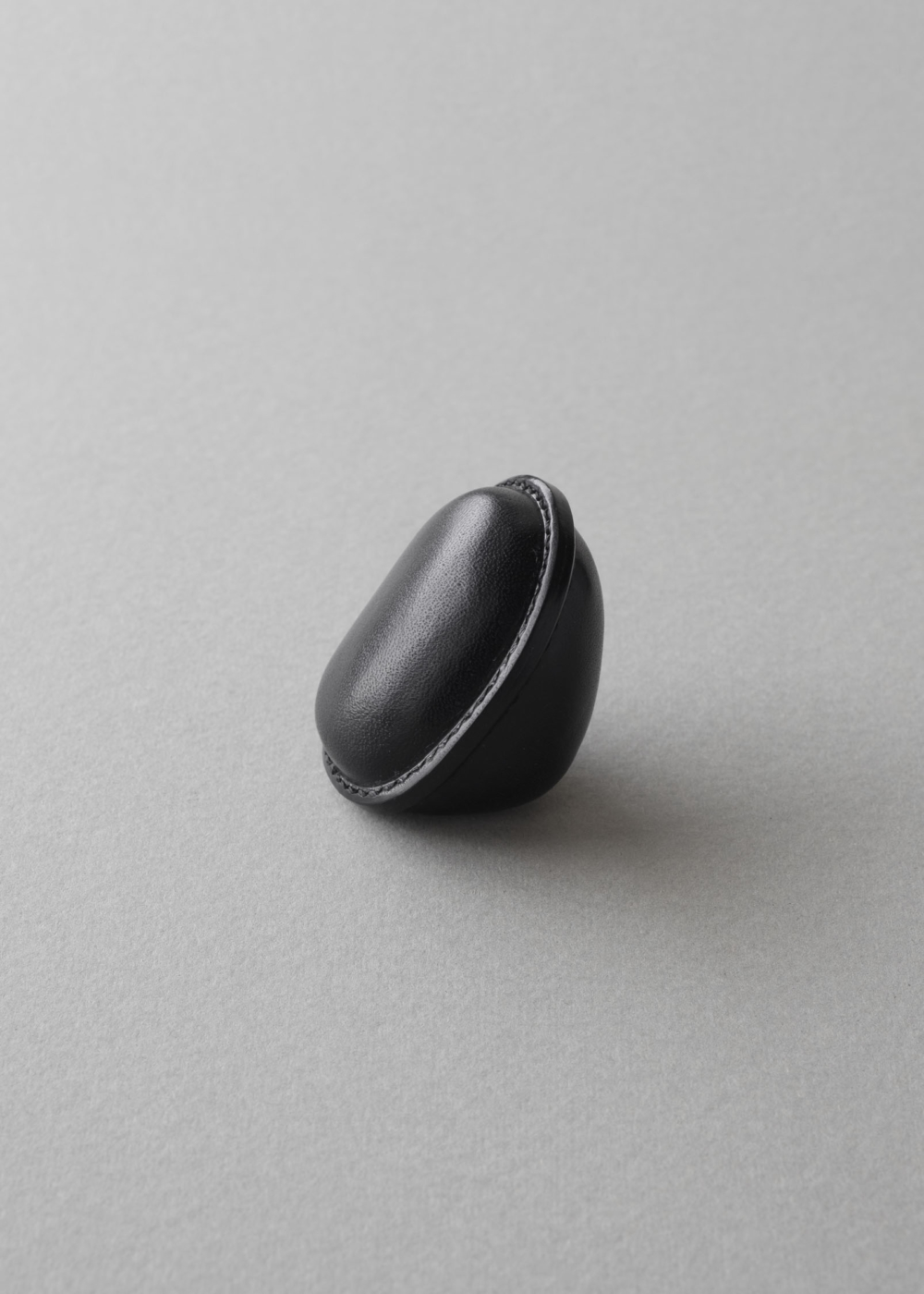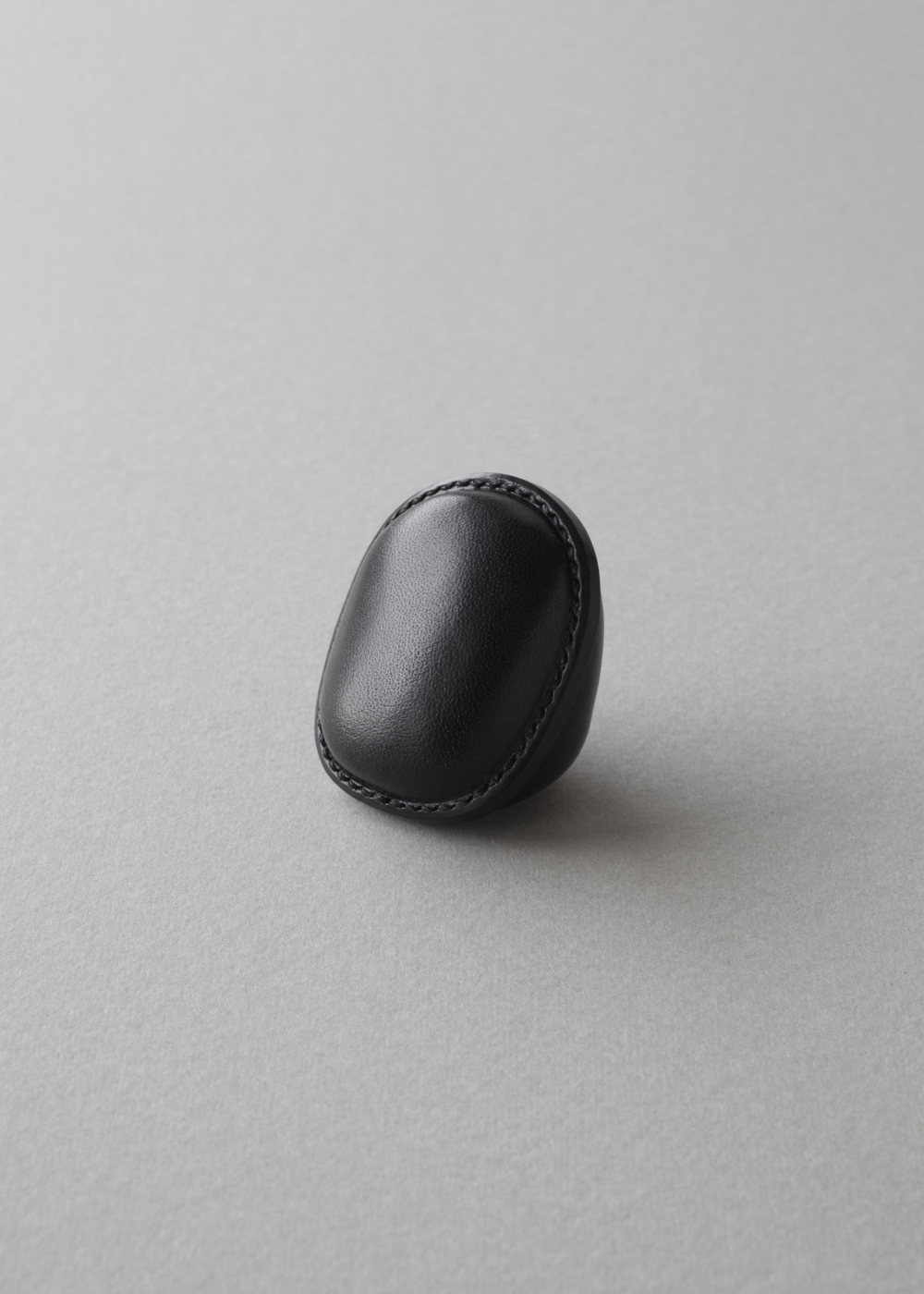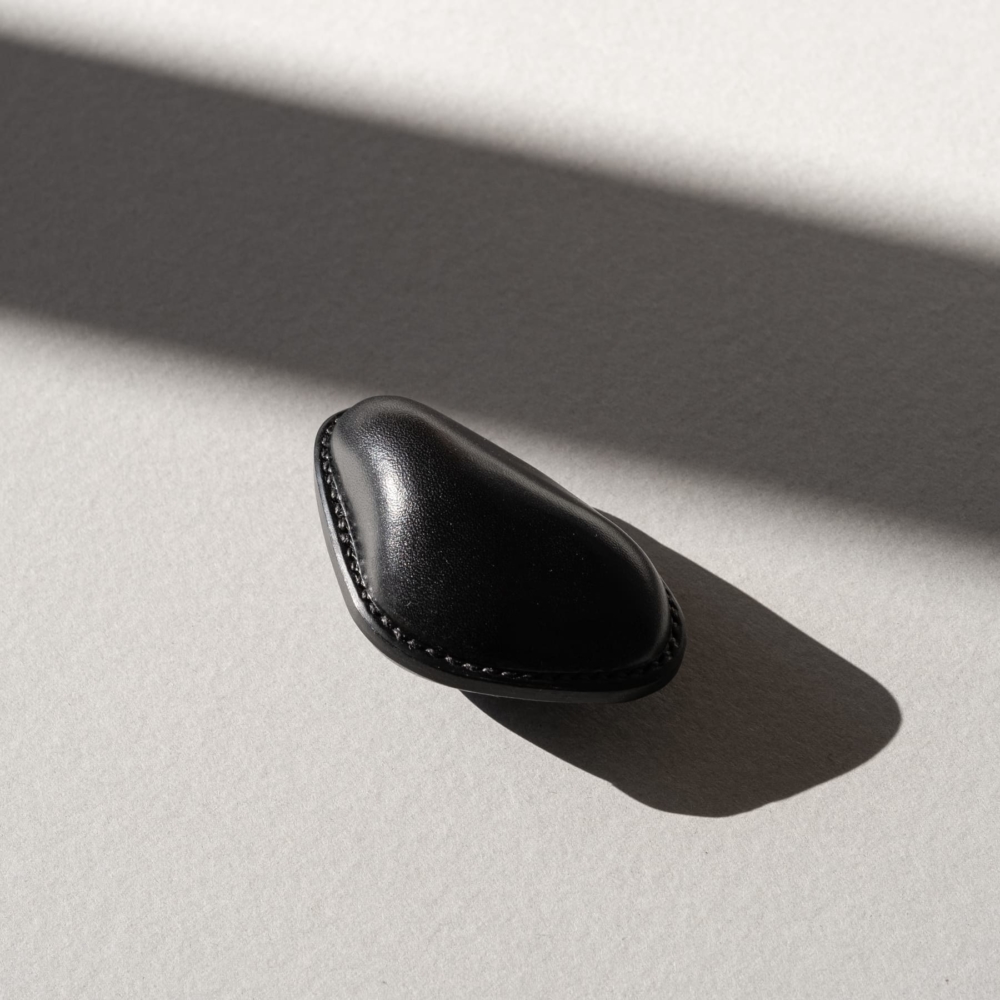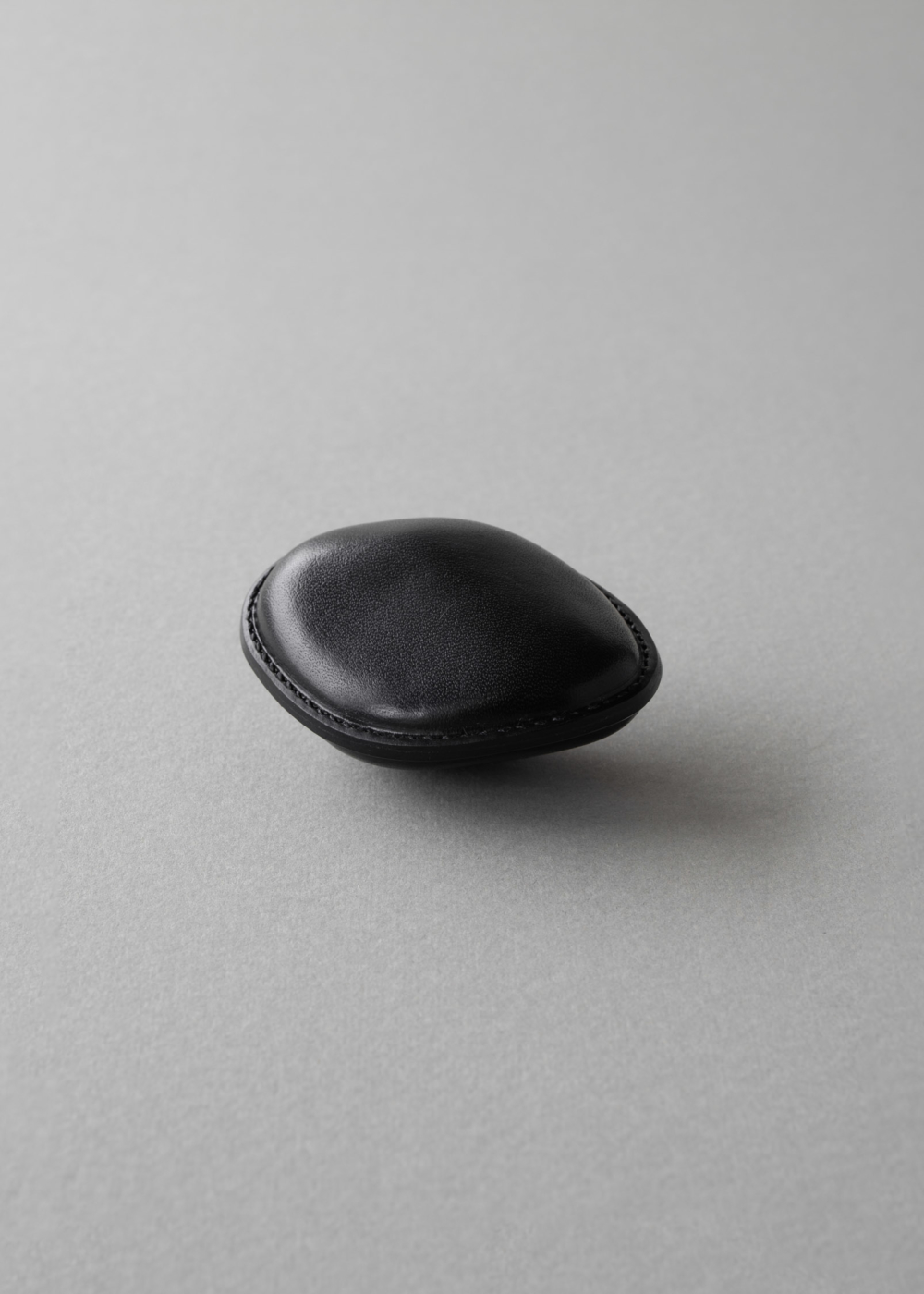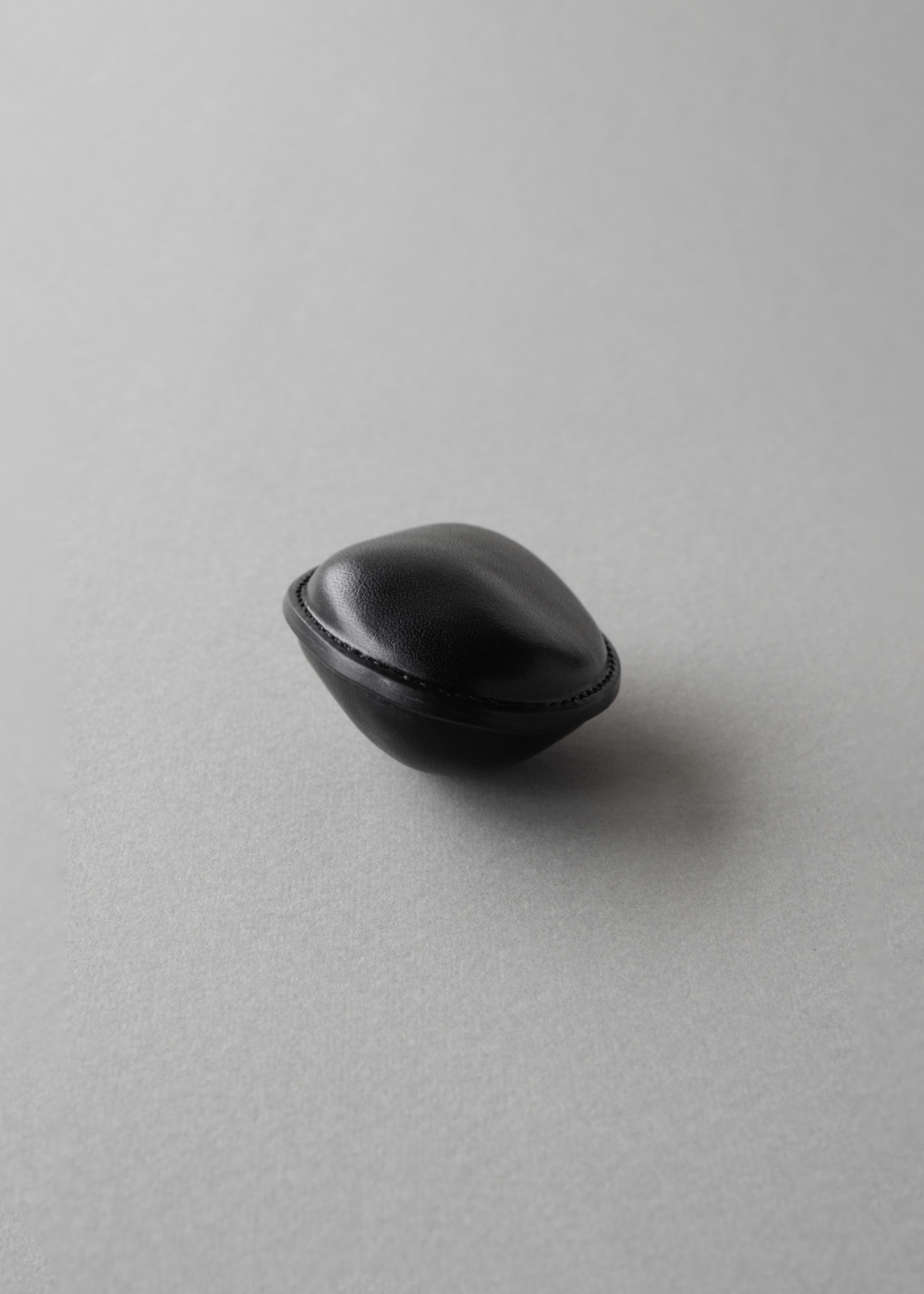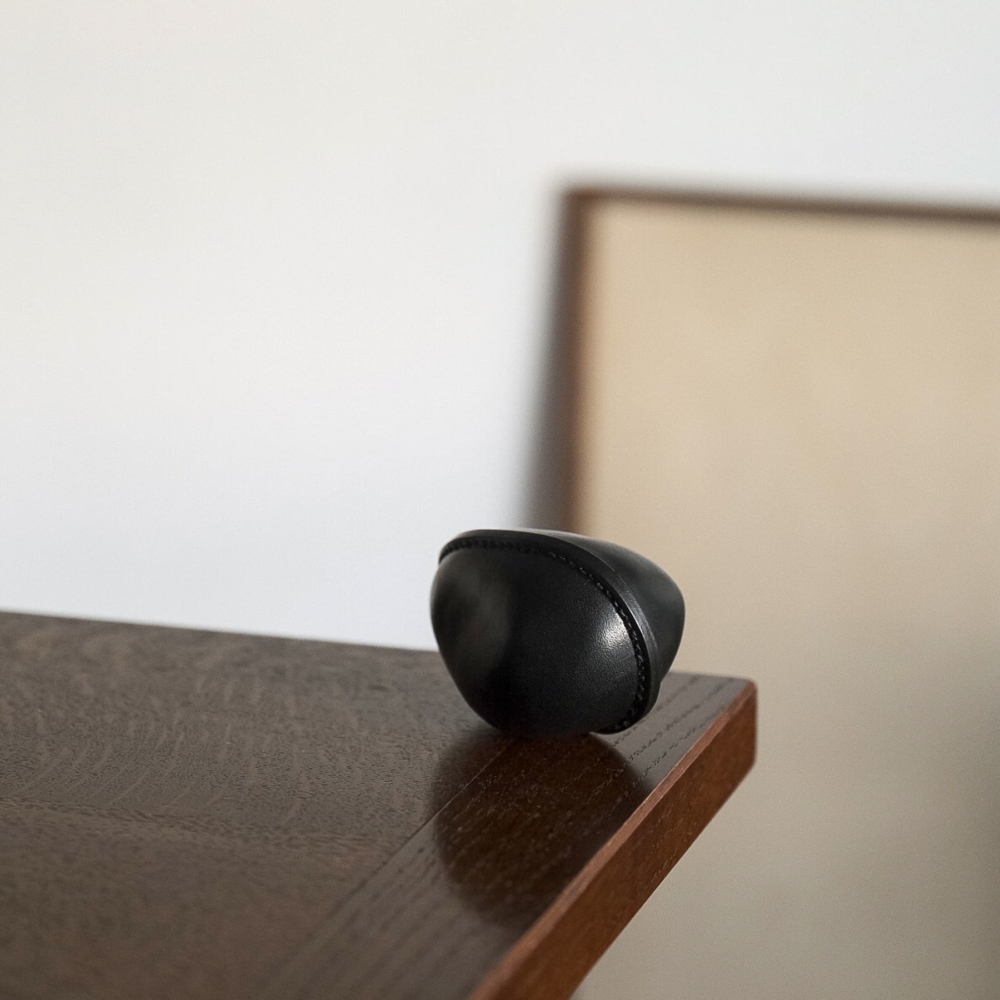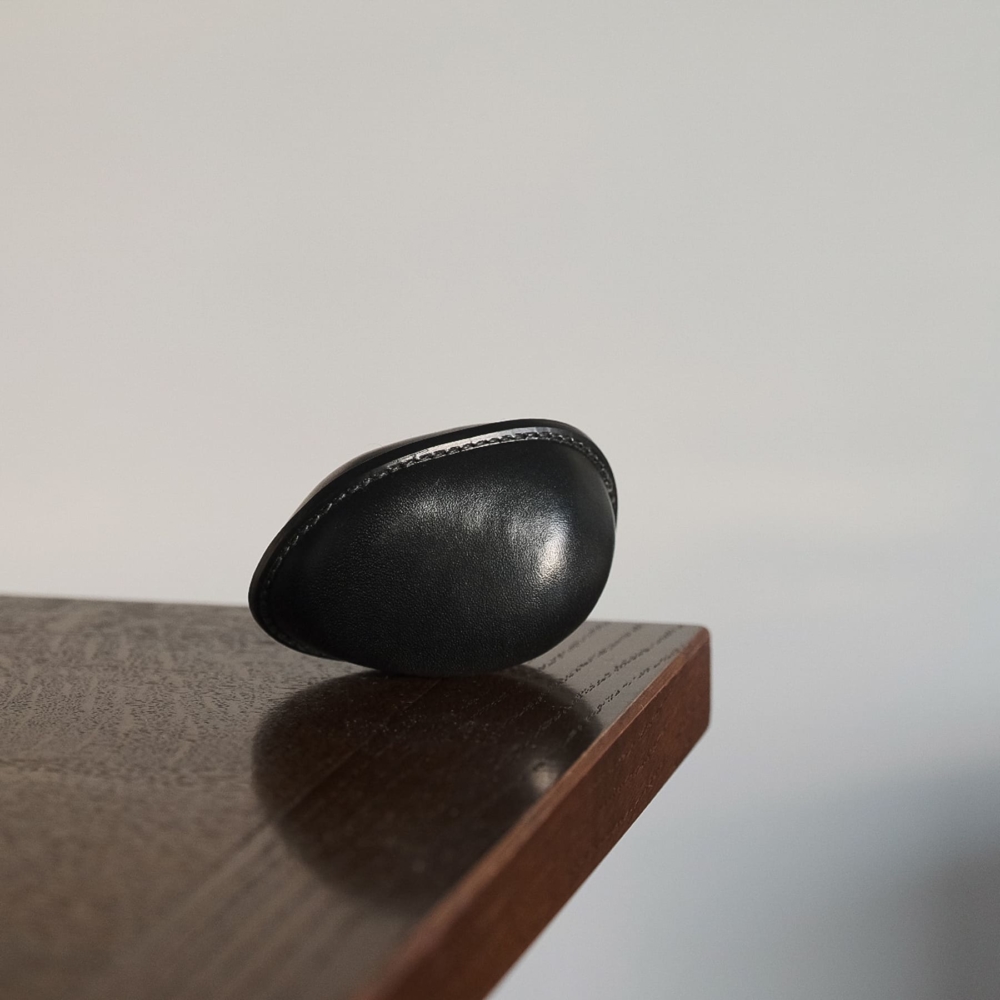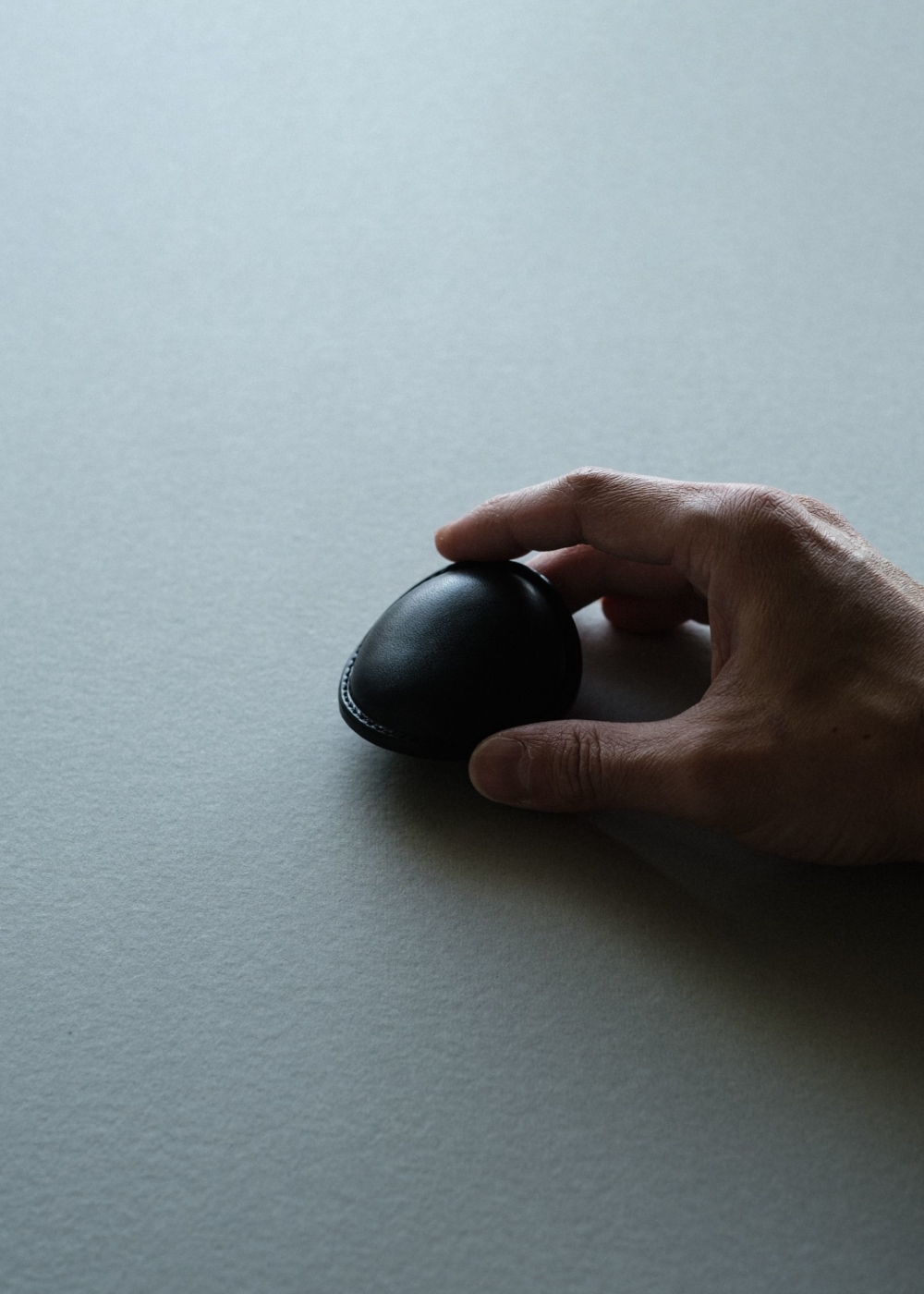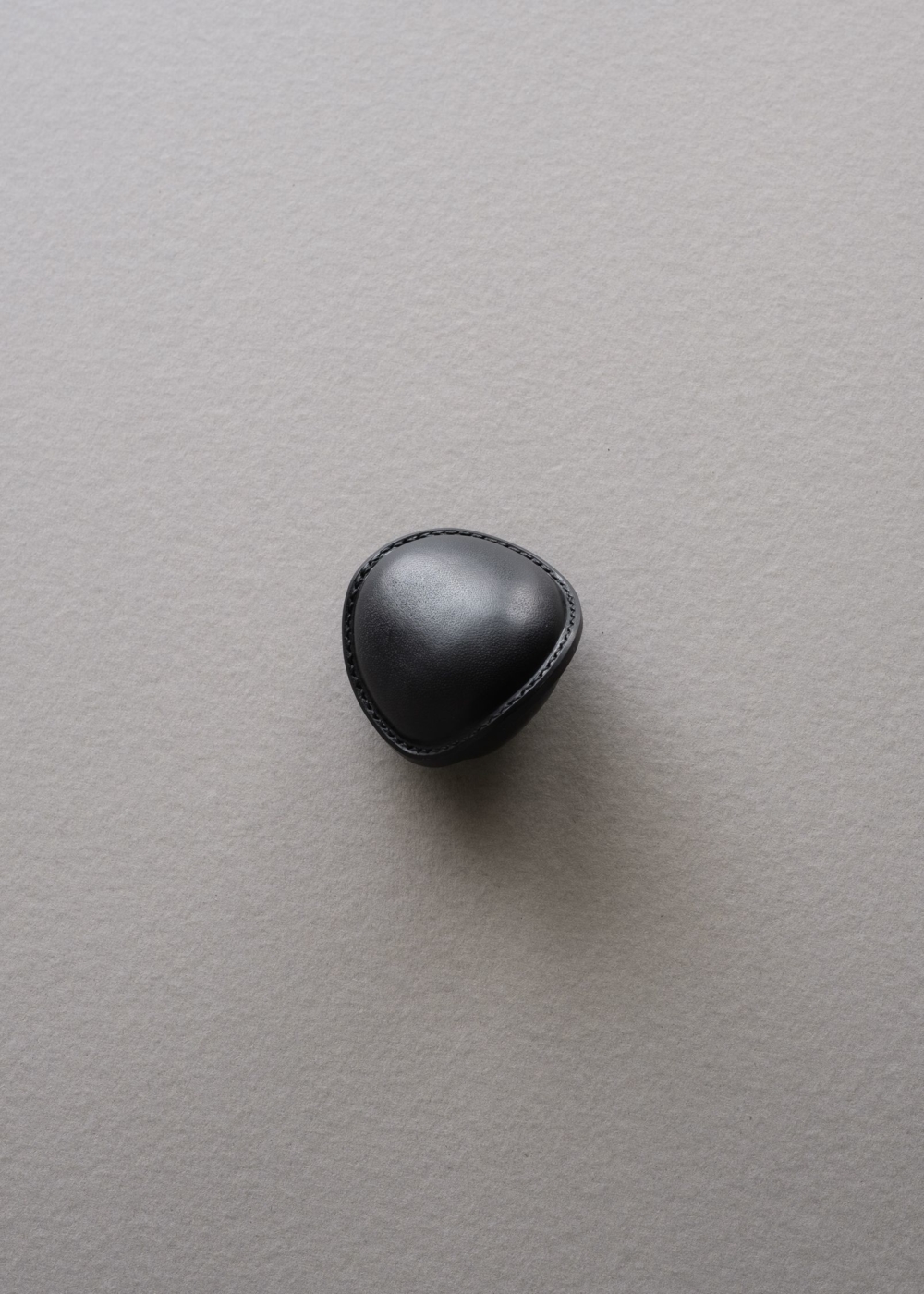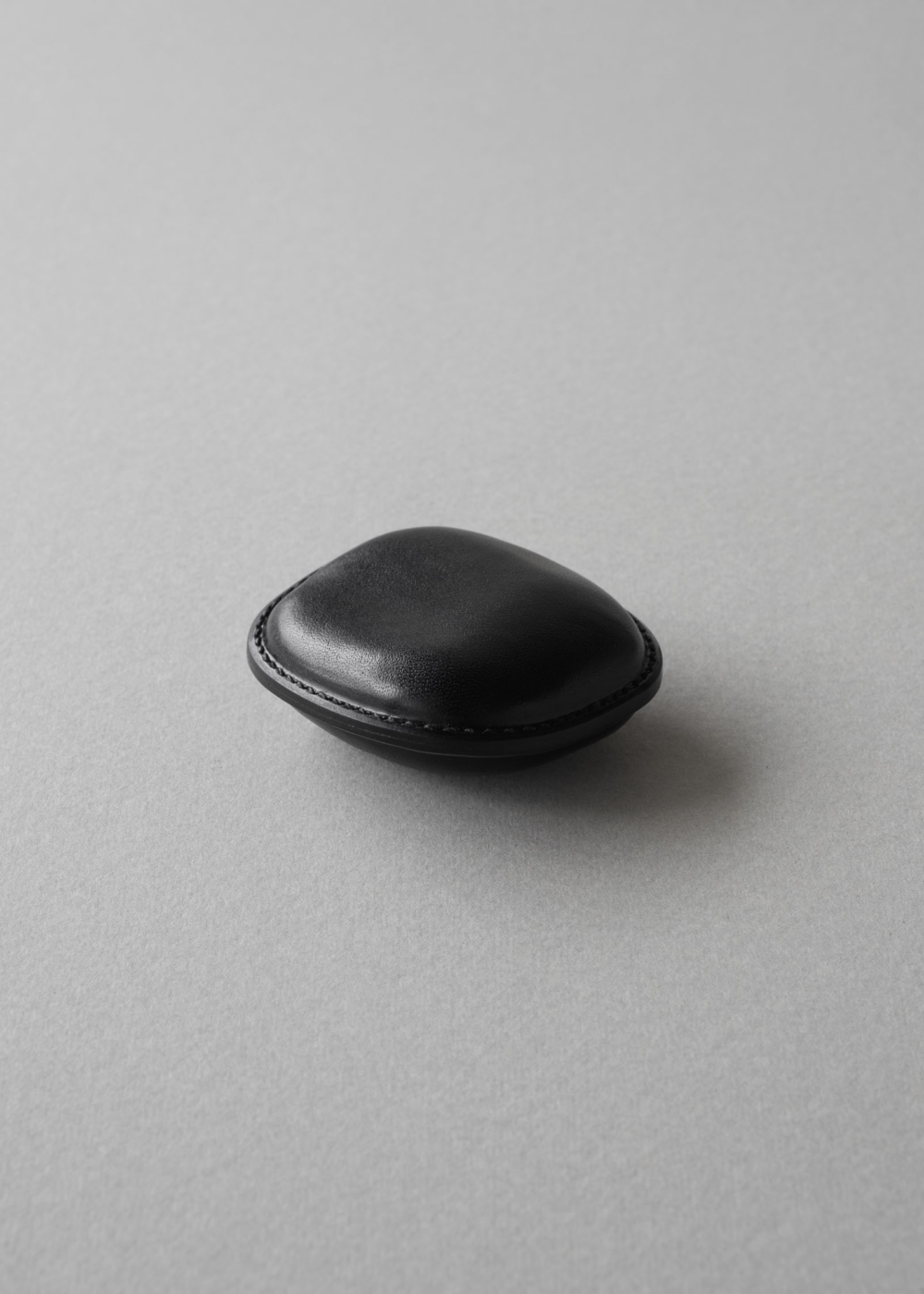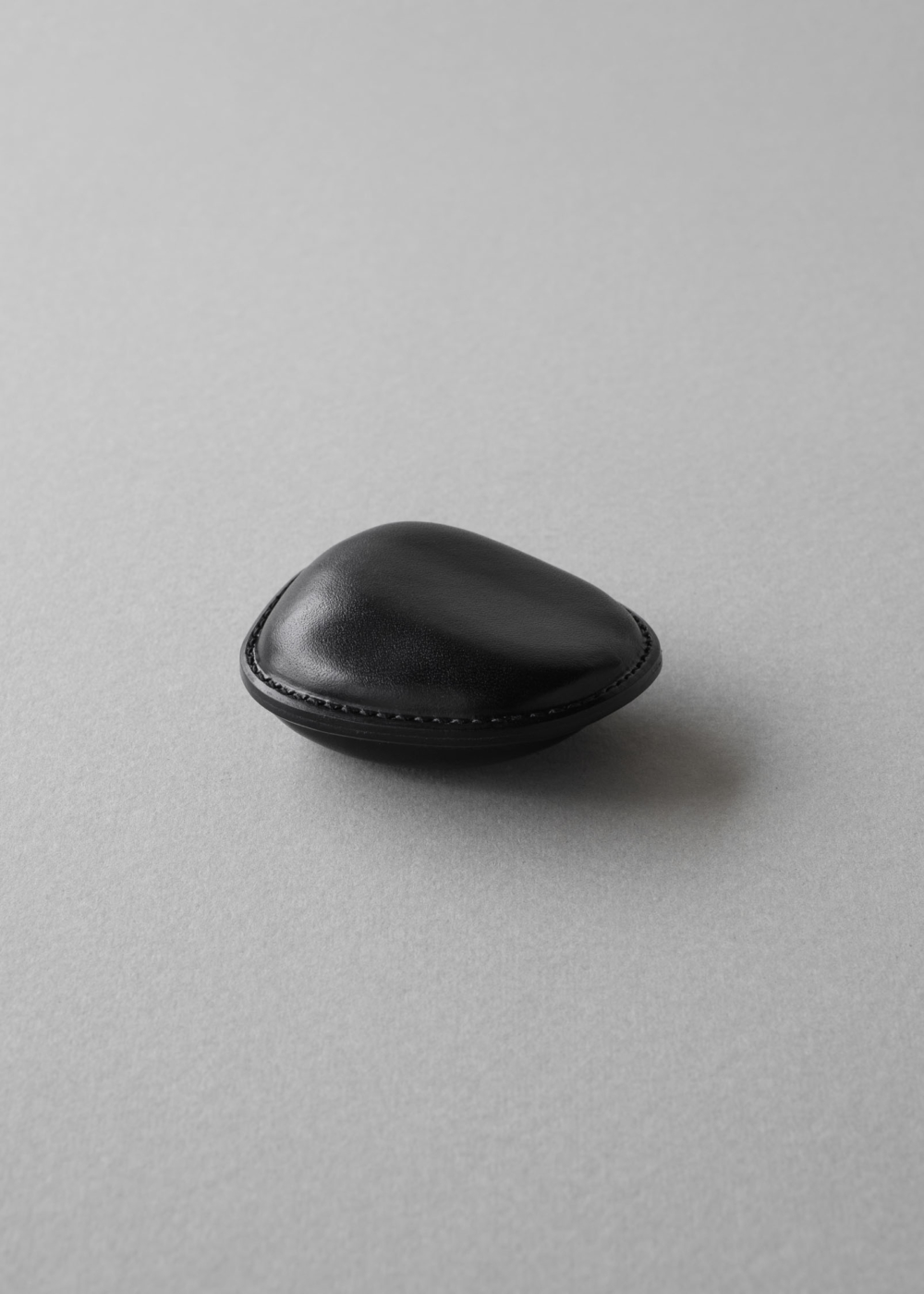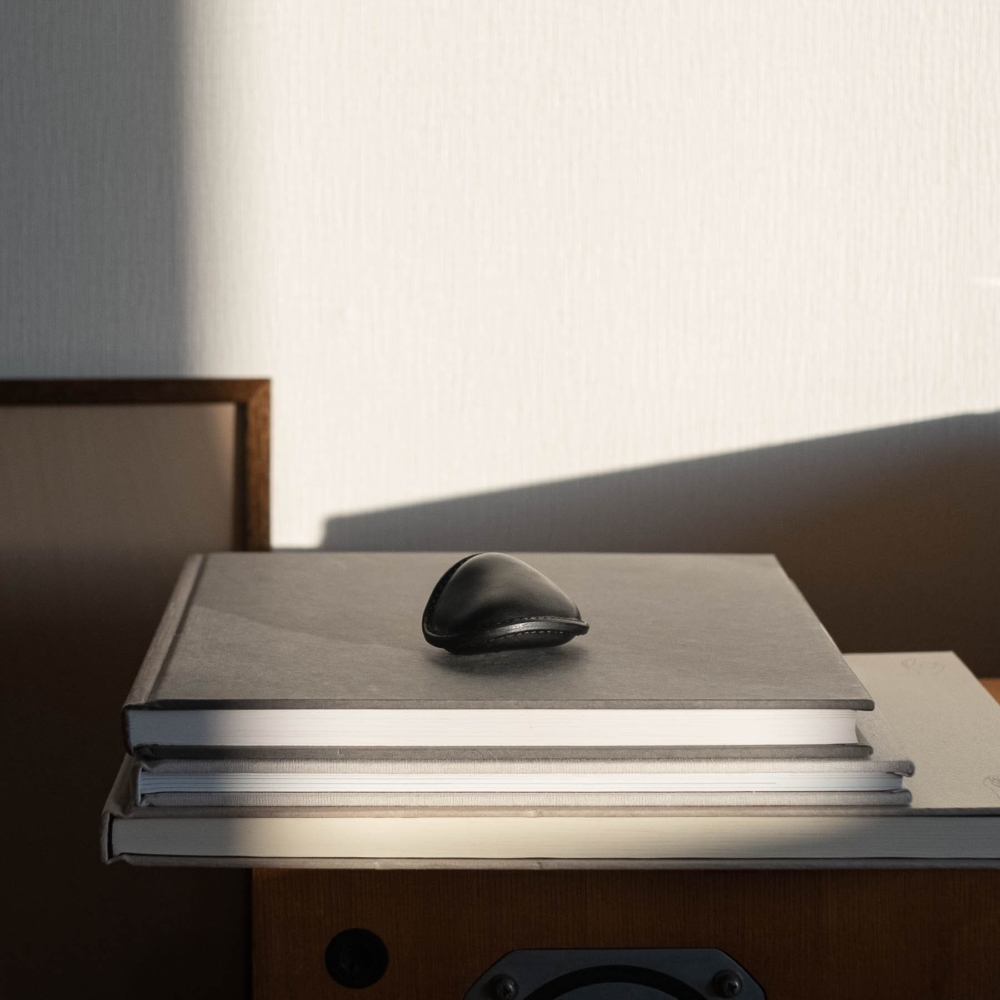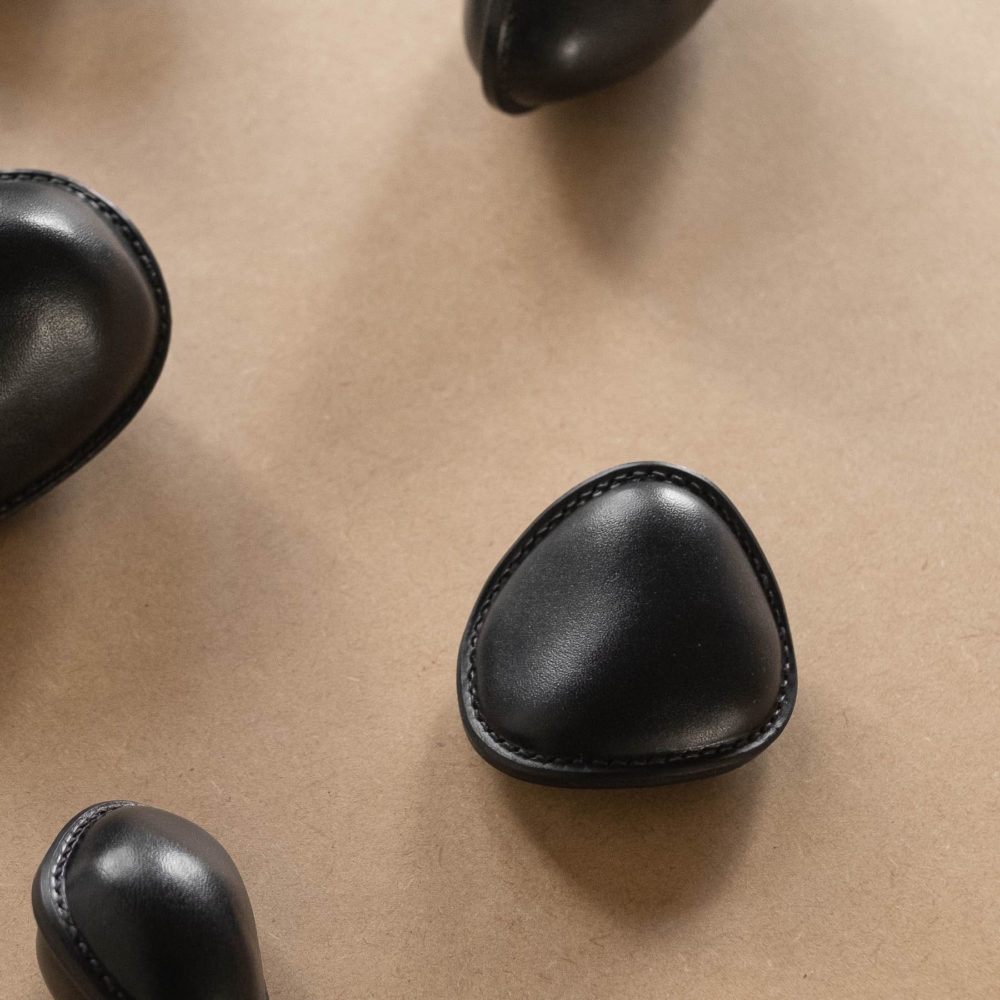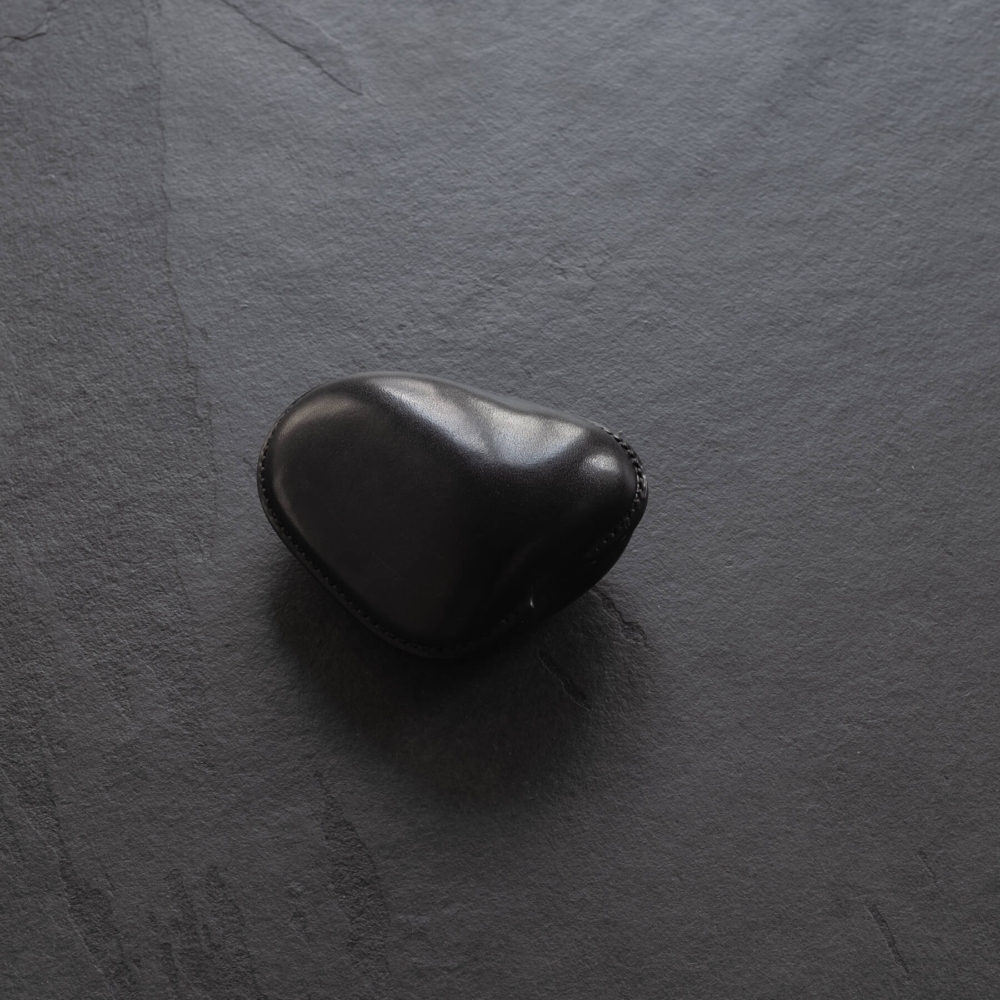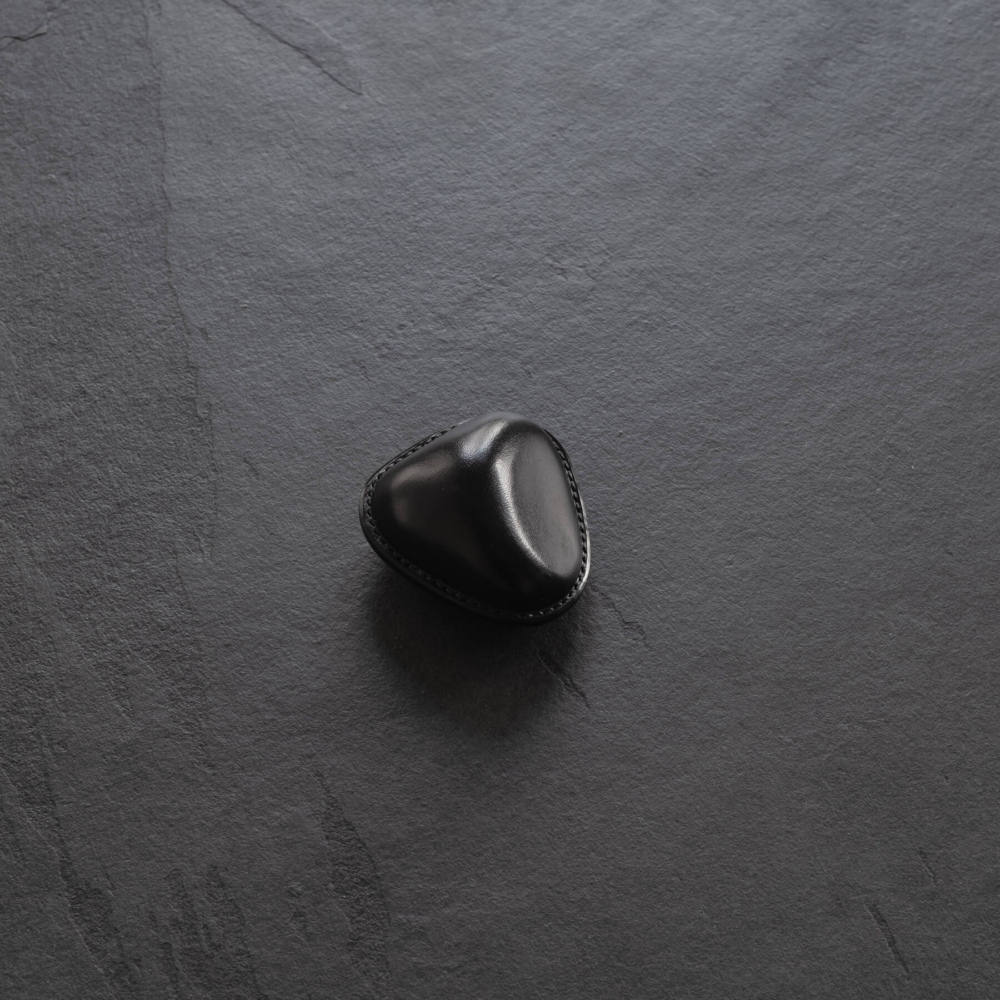Handcrafted in a small apartment room in Tokyo. A small rock picked up from a river in the city was wrapped in a vegetable tanned cow leather and stitched with a linen thread by hand. You can use it for a desktop object or a paperweight. Holding it in your hand will make you relax and more creative.
A stone paperweight in the study of Walter Gropius, the first principal of the Bauhaus. A part of the stone, which appears to be tactile to the touch, is covered with leather. The glossy look of the stone and the texture of the leather, which has turned brown with age, combine to create the appearance of a stone covered in leather. I was completely fascinated by the appearance created by the combination of the two.
I would love to touch the real thing, but I cannot do so right away. Fortunately, however, I have some of my favorite stones and leather for leather crafts that I have been doing for many years. I decided to make a prototype to see if I could make something similar myself. The stones at hand are not famous stones, but ordinary stones. The size and shape of the stone are to my liking, and I always keep it within easy reach of my hands. It did not have the attractive appearance of the "Gropius stone," so I decided to cover the entire stone with leather.
To adhere the leather, he used a traditional technique called "shibori," which uses the plasticity of the leather to mold it. A prototype was made with reference to an Italian coin case using the same technique. Unlike coin cases for which wooden molds are available for mass production, the shape of the stone is complicated and cannot be nailed for fixed drying, so the molding process was not a simple one.
After much trial and error, the leather stone was completed. When the stone is wrapped in leather, the surface color and texture are masked and the shape stands out. The bite of the stone, which would have felt too hard in its bare form, is softened by the leather between the leather and the stone, and the shape of the stone is gently transmitted to the hand. The hardness of the stone is felt beyond the elasticity of the leather. It was the first time for me to feel the charm of the stone in my hands and to feel as if "my hands are happy". Since then, I always keep the leather stone I made by my side, and I hold it in my hand whenever I feel like it.
I wondered if it would look different if I made it with a different stone. How would it feel to the touch if I changed the thickness of the leather? How can I make the stone and leather adhere to each other as if they were one piece? How can we make the stitching and tailoring beautiful? And so on... I continued to create, seeking the unknown sensation that would please my hands and the perfection of the piece as an entity.
Leather. Thin and soft leather is easy to work with, but the presence of the stone is strongly felt and unbalanced. Thick and hard leather is difficult to process because the presence of the leather is strong and does not convey the interesting qualities of the stone, such as hardness and shape. After experimenting with various manufacturing methods and thicknesses of leather suitable for maintaining the balance between the presence of the stone and leather, we finally found just the right amount of leather.
Leather was originally the skin of animals. It was the outer part of bones and muscles that contracted in accordance with the body's movements. If this is the case, the three-dimensional shape of the leather is where its unique qualities should be expressed, and we wondered how we could bring out the best. As I continued to make prototypes, the "character" that I sought in leather stones became clear to me.
One of the charms of stone is its shape, which has been created over a long period of time. Forms created by the providence of nature, beyond the reach of human intention, are pure and varied, and bring about slight fluctuations in human thought. Change is a stimulus, a switch in our thinking. At the same time (although it is a contradictory effect), the shape of a stone gives a certain sense of security and comfort, and I believe that it also has the function of further expanding the ideas brought about by the change.
The dense, firm cowhide leather takes on the shape of the stone and gently conveys it to the hand. In contrast to the organic shape of the stone, the exquisite stitching and linear tailoring of the details create just the right amount of tension, creating the appearance of a space. An object to be felt and enjoyed with the hands. The physical object "Leather Wrapped Stone" will be on your desk as a thinking tool for your thoughts.

There are countless stones all over the place. They are ubiquitous, and although at first glance they may seem to make no difference to each other, they have different characteristics depending on the surrounding geology and the type of rock.

The stones are selected with a view to how they will fit in the fingers and palm, how comfortable they will feel in the hand, and how they will look when covered with leather.

This leather is made from the hides of cows born and raised in Japan. Its fibres are dense and fine, and it is characterised by its suppleness and firmness. It contains oil and wax, which makes it shine with use.

The leather is soaked in water and then moulded close to the stone. The leather has a plasticity which means that when it is deformed by force, the distortion remains intact. The leather, which can be up to 2 mm thick, is dried slowly to ensure that it adheres to the stone without any gaps, and to stabilise its shape.
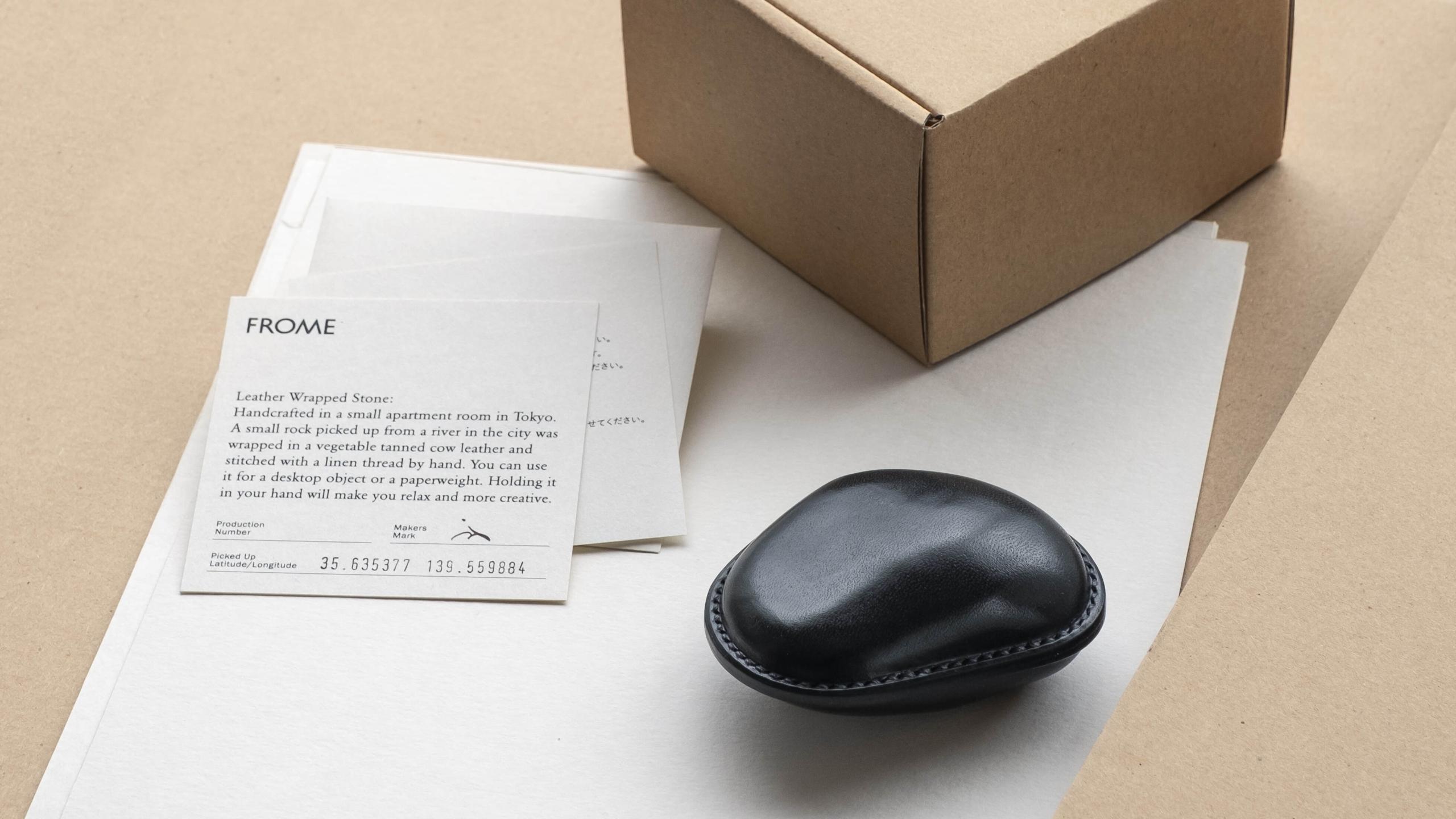
The accompanying card shows the production number, the maker's mark and the coordinates of the place where the stone was collected.


Ideas come from our hands. If you hold it in your hand when you are thinking about something, it can inspire great ideas and a wealth of imagination. It can be used as a paper weight or as an object to decorate a space.
| Weight | 205 g |
|---|---|
| Dimensions | 80 × 65 × 40 mm |
| Attention | ◯本製品には天然皮革および天然石を使用しています。 1) This product is made of natural leather and natural stones. |
